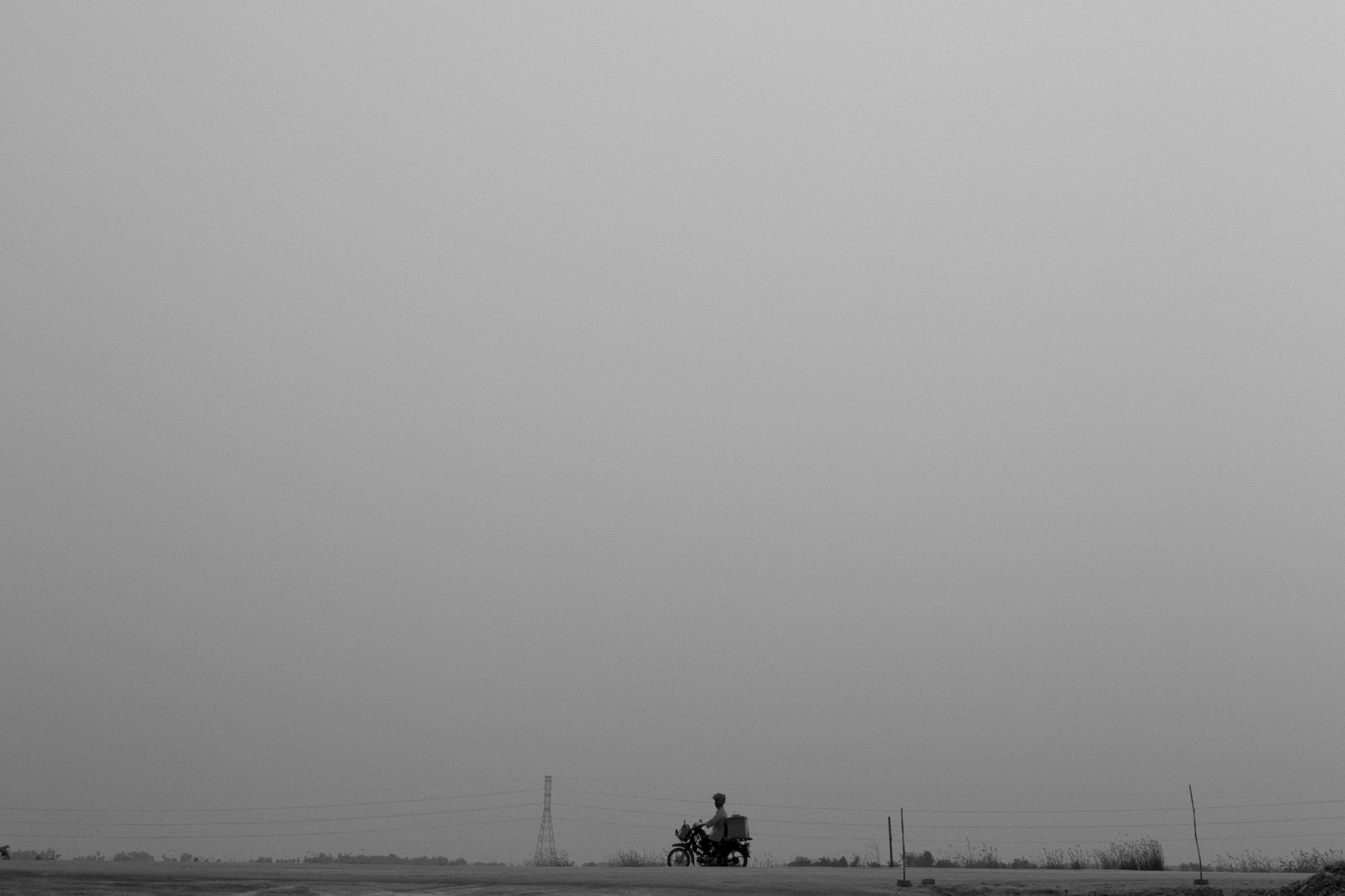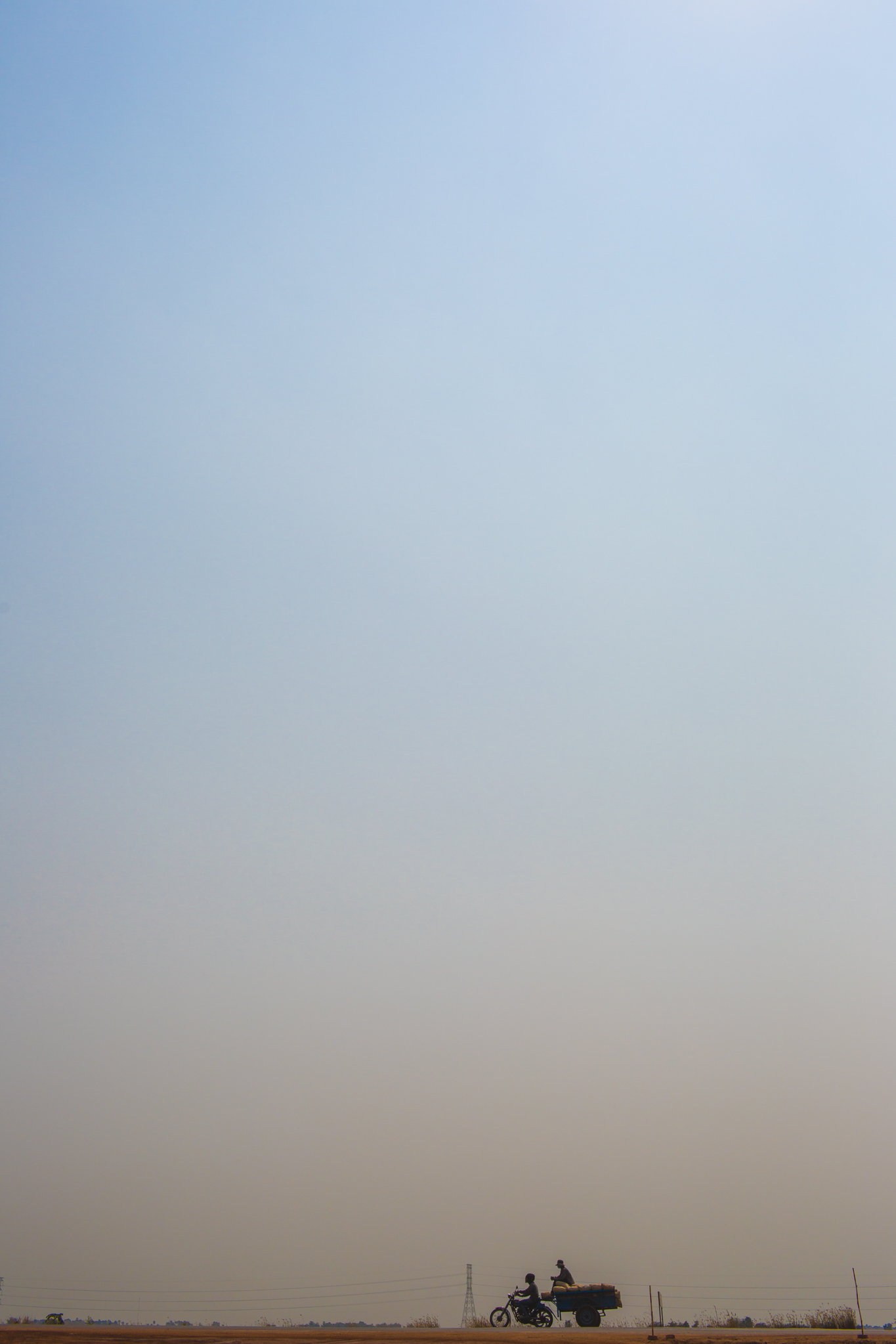** WARNING ** There are some graphic images in this blog post. The images and subject matter are not for the faint of heart.
***
On March 8, news broke out that a Malaysian flight had just disappeared off the radar (as of this writing, it’s still missing). It’s quite a mind-boggling story, and hopefully there’s some resolution to this mystery soon, especially for the families directly impacted by this event. Selfishly, it rattled me a little bit considering I was flying out to start my journey in Southeast Asia the next morning.
Add the fact that this was my first time traveling solo and for such an extended period of time, along with the extreme heat and humidity (it’s been 97 degrees+, 100% humidity every day I’ve been here – I don’t do well in the heat), I was wondering if I had made the right decision.
After a twenty hour flight, I landed in Taipei for a short layover and took my first photo of the journey.
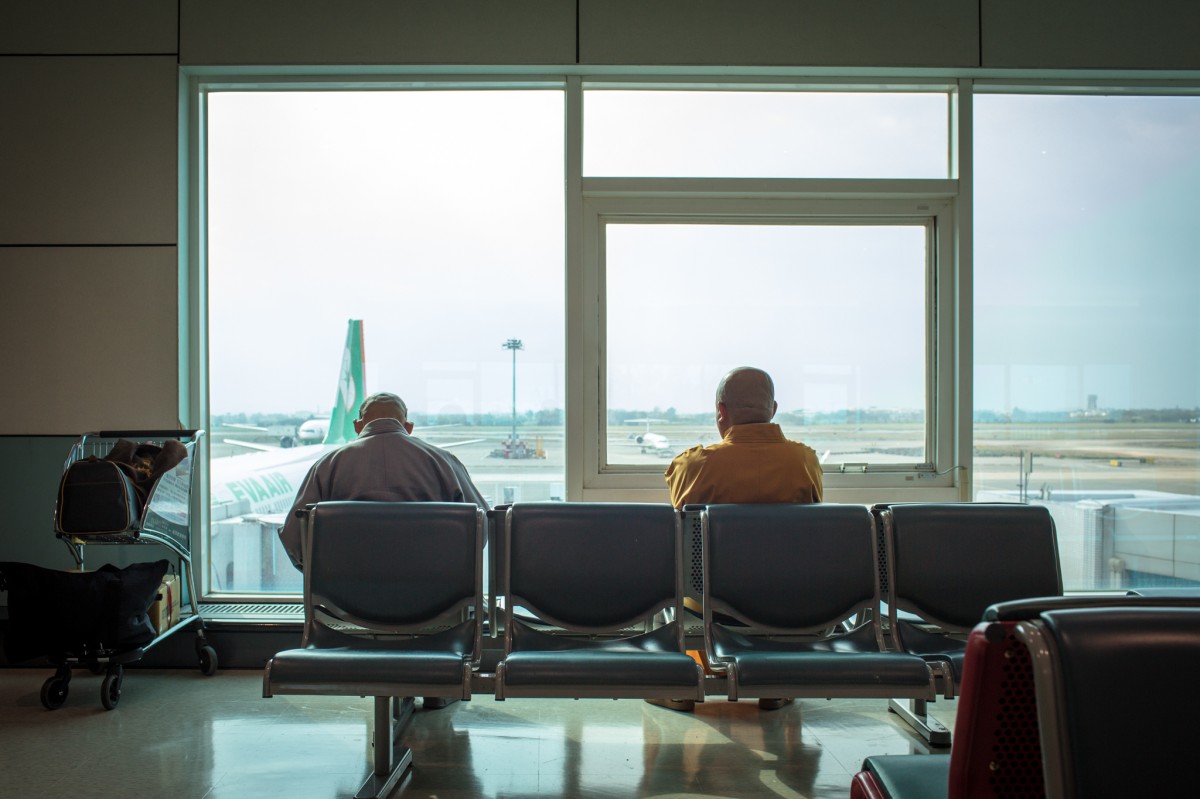 Eventually I landed in Phnom Penh, the capital city of Cambodia. I got settled in to my hotel and decided to trek out and take a walk around town before it got too late. Because I heard and read so many stories of snatch-and-grab theft of cameras, I was a bit paranoid about going out and about… but I mean, photographing was one of the main reasons why I chose to vacation in SE Asia, so I wasn’t going to let a few horror stories deter me. I figured keeping your wits about you and paying attention to your surroundings would minimize the risk of getting my camera stolen.
Eventually I landed in Phnom Penh, the capital city of Cambodia. I got settled in to my hotel and decided to trek out and take a walk around town before it got too late. Because I heard and read so many stories of snatch-and-grab theft of cameras, I was a bit paranoid about going out and about… but I mean, photographing was one of the main reasons why I chose to vacation in SE Asia, so I wasn’t going to let a few horror stories deter me. I figured keeping your wits about you and paying attention to your surroundings would minimize the risk of getting my camera stolen.
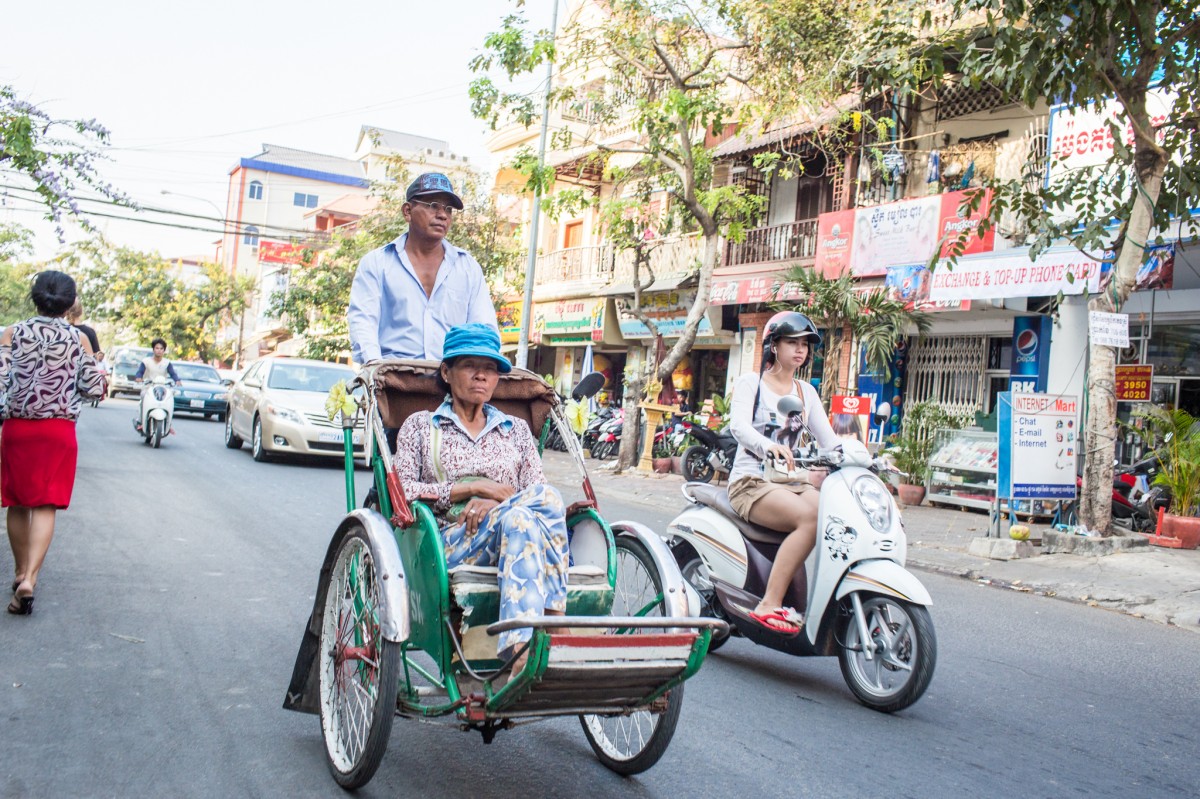
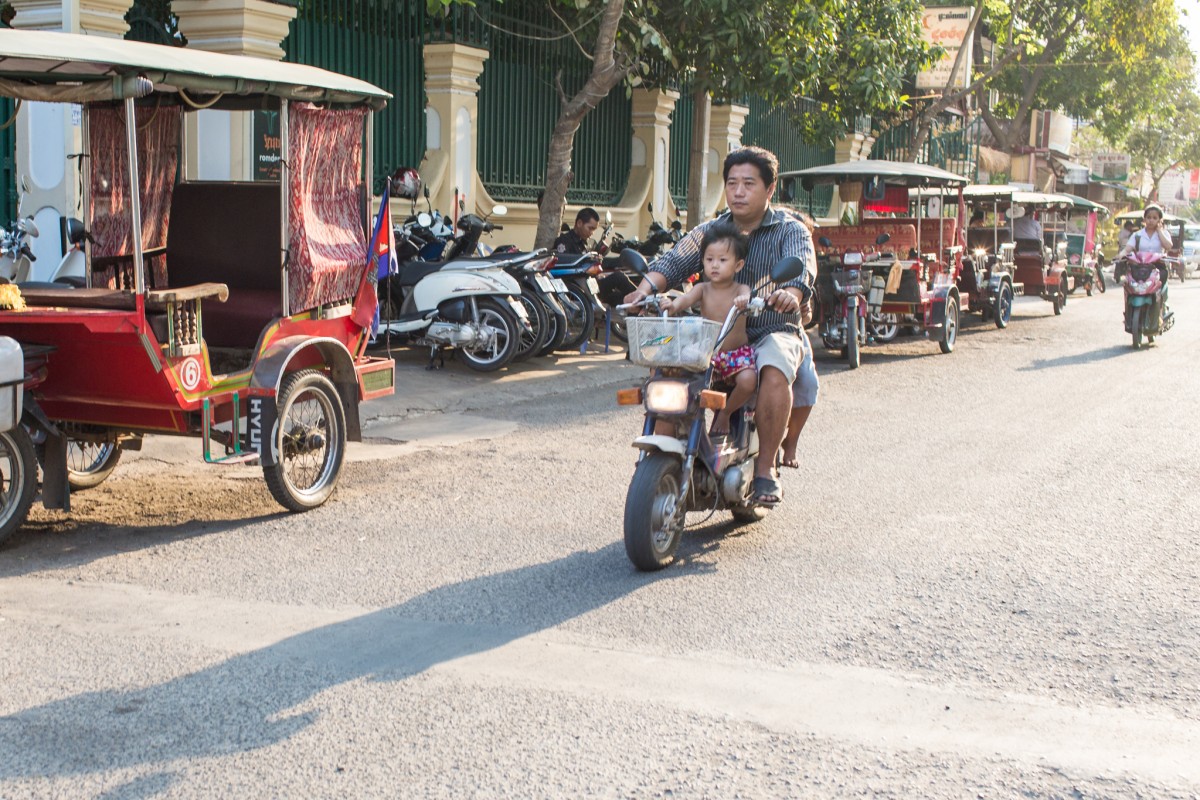
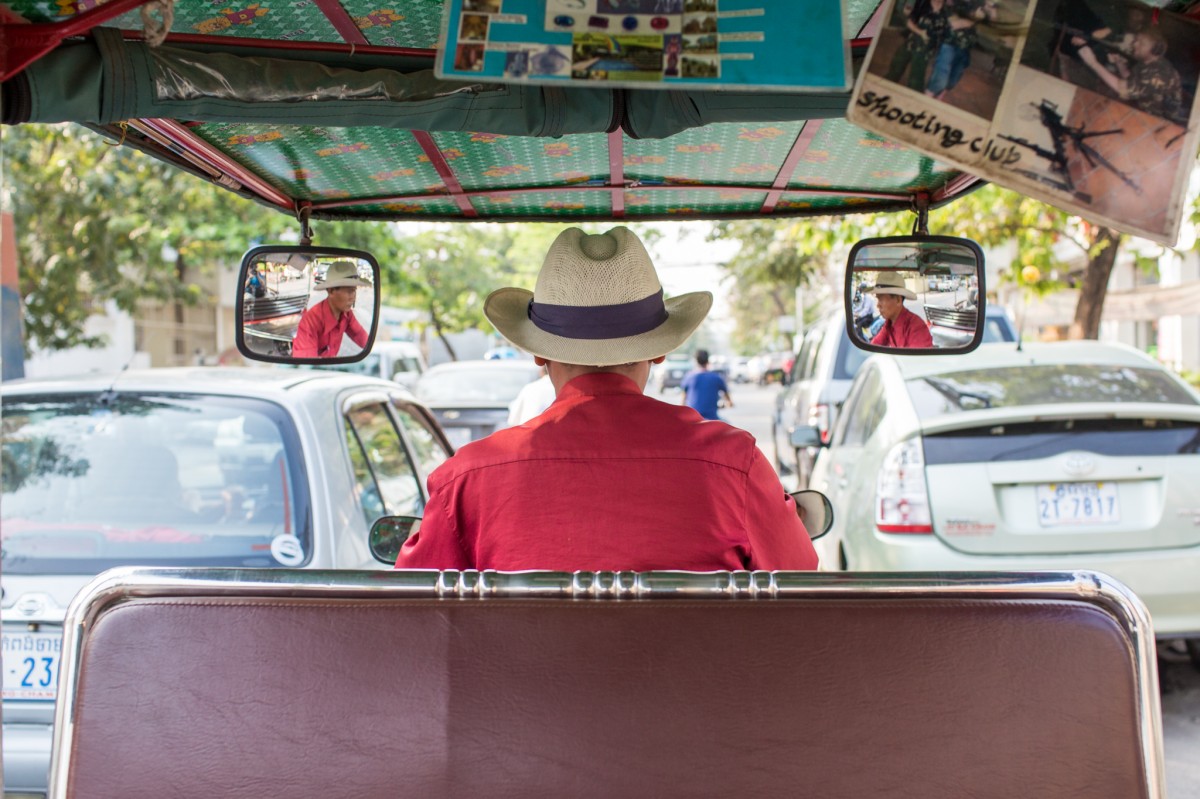
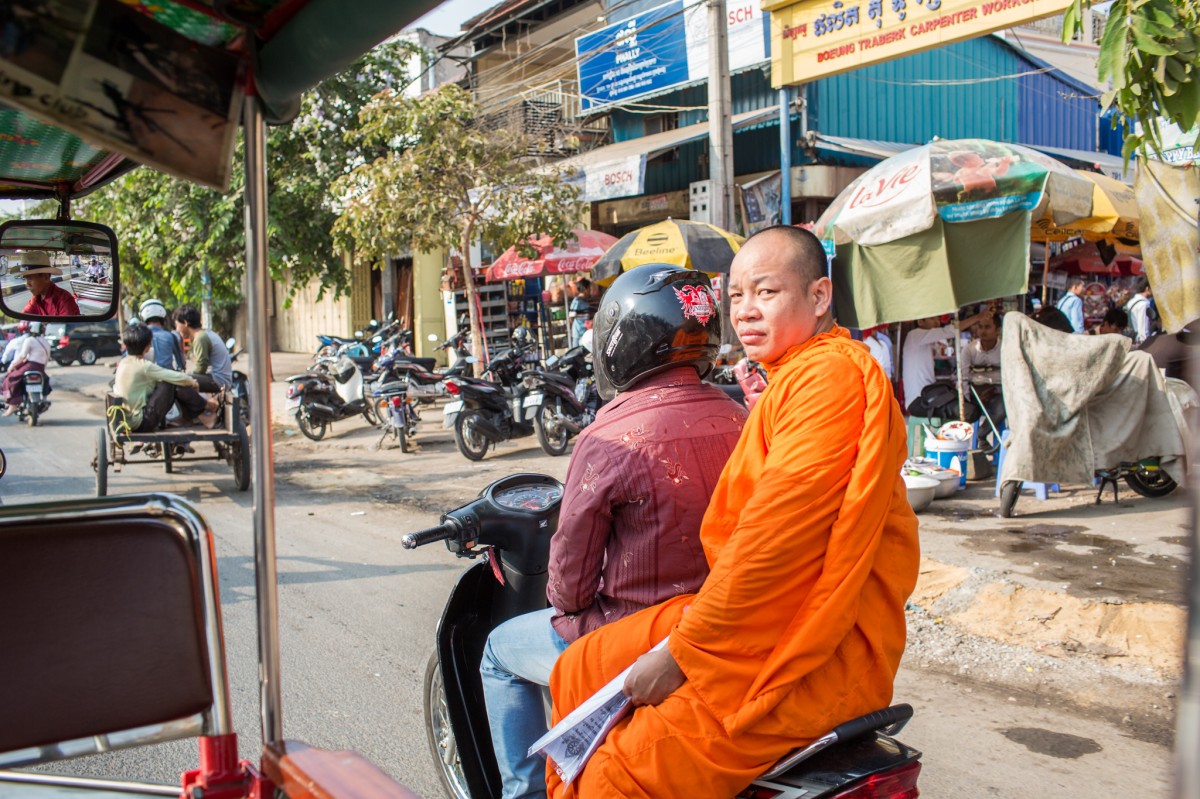 I’d say there’s a 20:1 ratio of scooters/tuk tuks to automobiles on the roads of Cambodia. I’m probably underestimating. The streets are actually pretty crazy, as it seems no one really follows traffic laws, let alone stay in their own lanes.
I’d say there’s a 20:1 ratio of scooters/tuk tuks to automobiles on the roads of Cambodia. I’m probably underestimating. The streets are actually pretty crazy, as it seems no one really follows traffic laws, let alone stay in their own lanes.
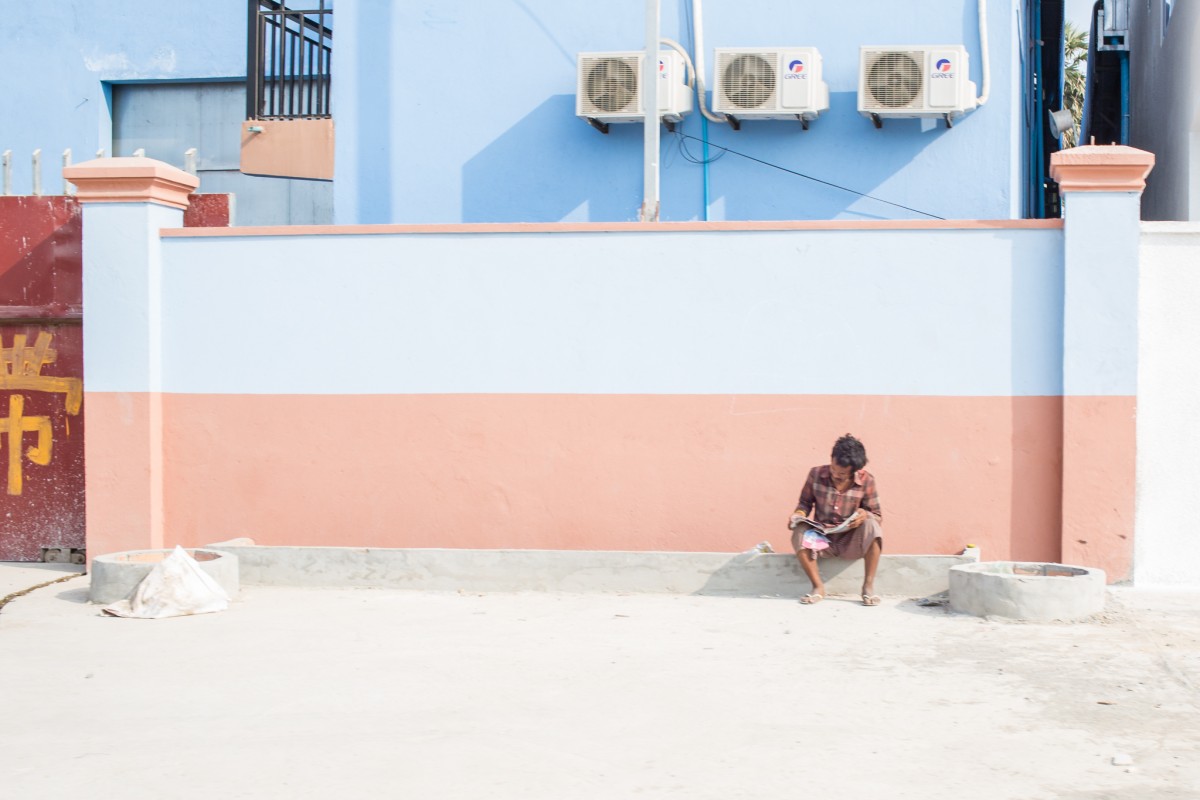
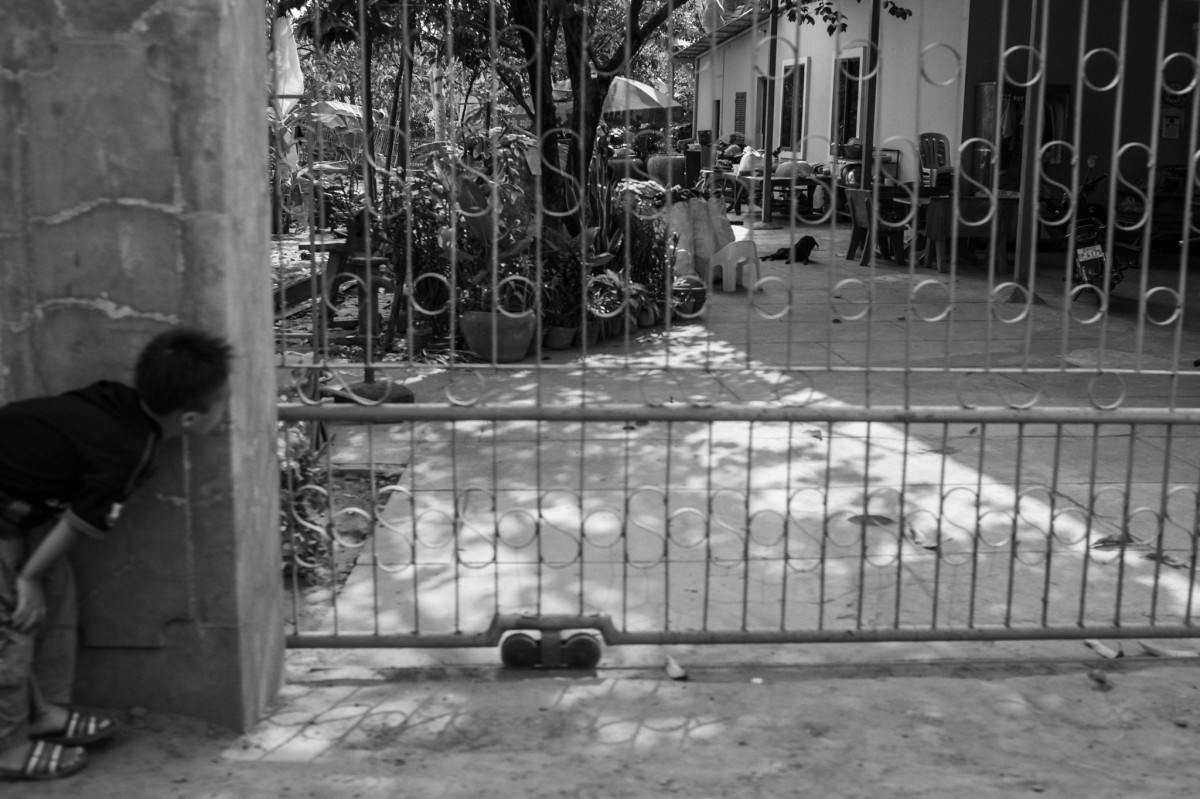
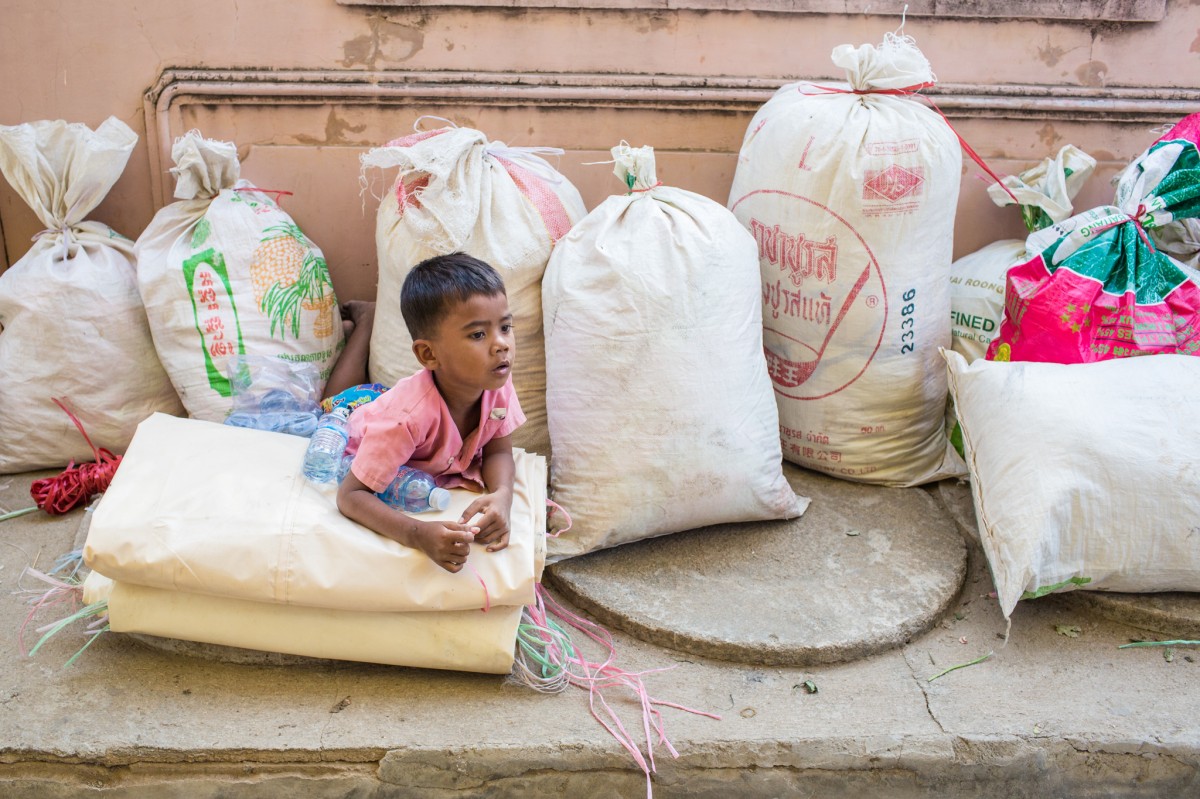 In preparing for my journey, I did a bit of research on the history of Cambodia. I kindle’d (is that a term?) Luong Ung’s “First They Killed My Father,” a memoir of her experiences as a child during Pol Pot’s Khmer Rouge regime in the mid to late 1970’s. I also watched the movie “The Killing Fields” as well as the compelling documentary, “S21 – The Khmer Rouge Killing Machine.” To be honest, I had never known too much, if anything, about the genocide that took place there in recent history. Either I slept through those history lessons in high school, or they just aren’t included in American textbooks (probably the latter).I’m in no way an expert on what happened in Cambodia in the 70’s, but in a nutshell, Pol Pot took control of the fragile government and began imprisoning, torturing and executing basically anyone who wasn’t a farmer. Doctors, lawyers, teachers, artists, religious leaders, university students, foreigners and what have you were all driven from the urban areas of Cambodia and were considered enemies of the state. The children of these people were also murdered, for fear of retribution against the government in the future.
In preparing for my journey, I did a bit of research on the history of Cambodia. I kindle’d (is that a term?) Luong Ung’s “First They Killed My Father,” a memoir of her experiences as a child during Pol Pot’s Khmer Rouge regime in the mid to late 1970’s. I also watched the movie “The Killing Fields” as well as the compelling documentary, “S21 – The Khmer Rouge Killing Machine.” To be honest, I had never known too much, if anything, about the genocide that took place there in recent history. Either I slept through those history lessons in high school, or they just aren’t included in American textbooks (probably the latter).I’m in no way an expert on what happened in Cambodia in the 70’s, but in a nutshell, Pol Pot took control of the fragile government and began imprisoning, torturing and executing basically anyone who wasn’t a farmer. Doctors, lawyers, teachers, artists, religious leaders, university students, foreigners and what have you were all driven from the urban areas of Cambodia and were considered enemies of the state. The children of these people were also murdered, for fear of retribution against the government in the future.
In a span of just five years, nearly 3 million people were murdered. Below are some images I took at Cheoung Ek, also known as the Killing Fields. This was where most of the executions took place, and it also served as the burial ground for all those murdered.
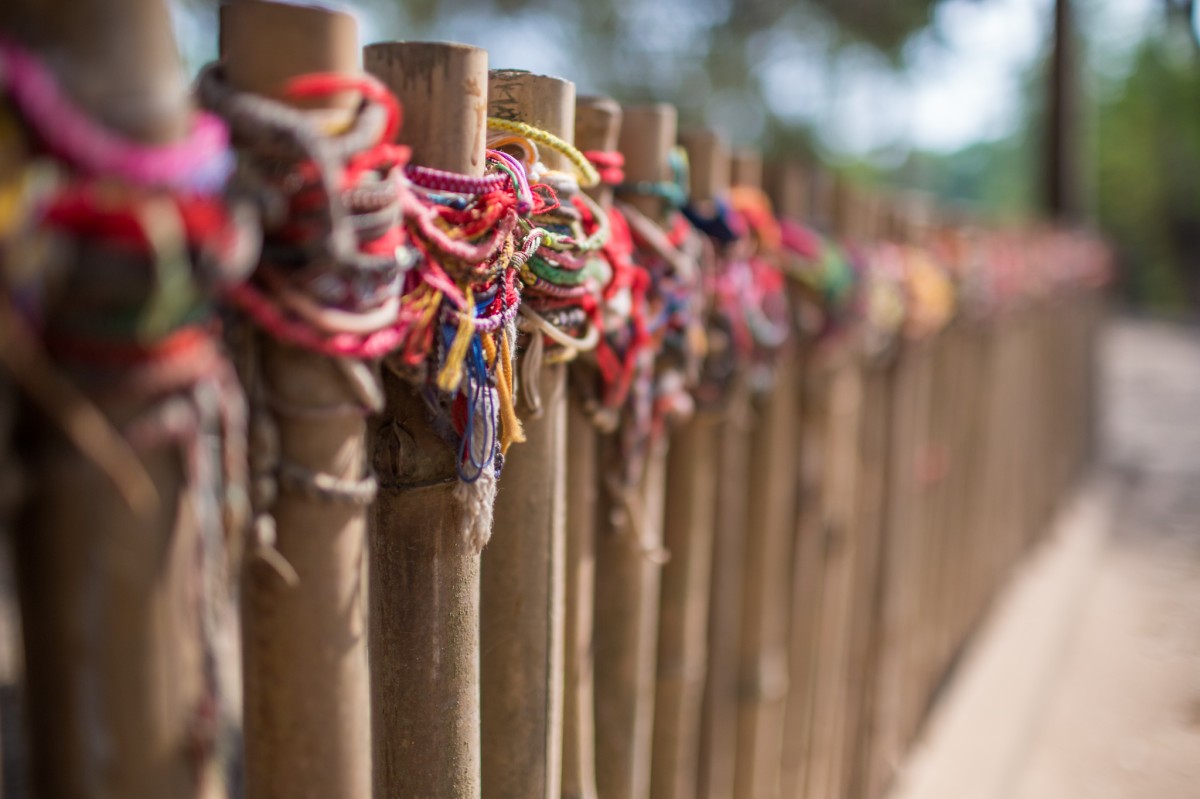 Visitors leave woven bracelets as a way to show their respects. There are thousands of these all around the Killing Fields.
Visitors leave woven bracelets as a way to show their respects. There are thousands of these all around the Killing Fields.
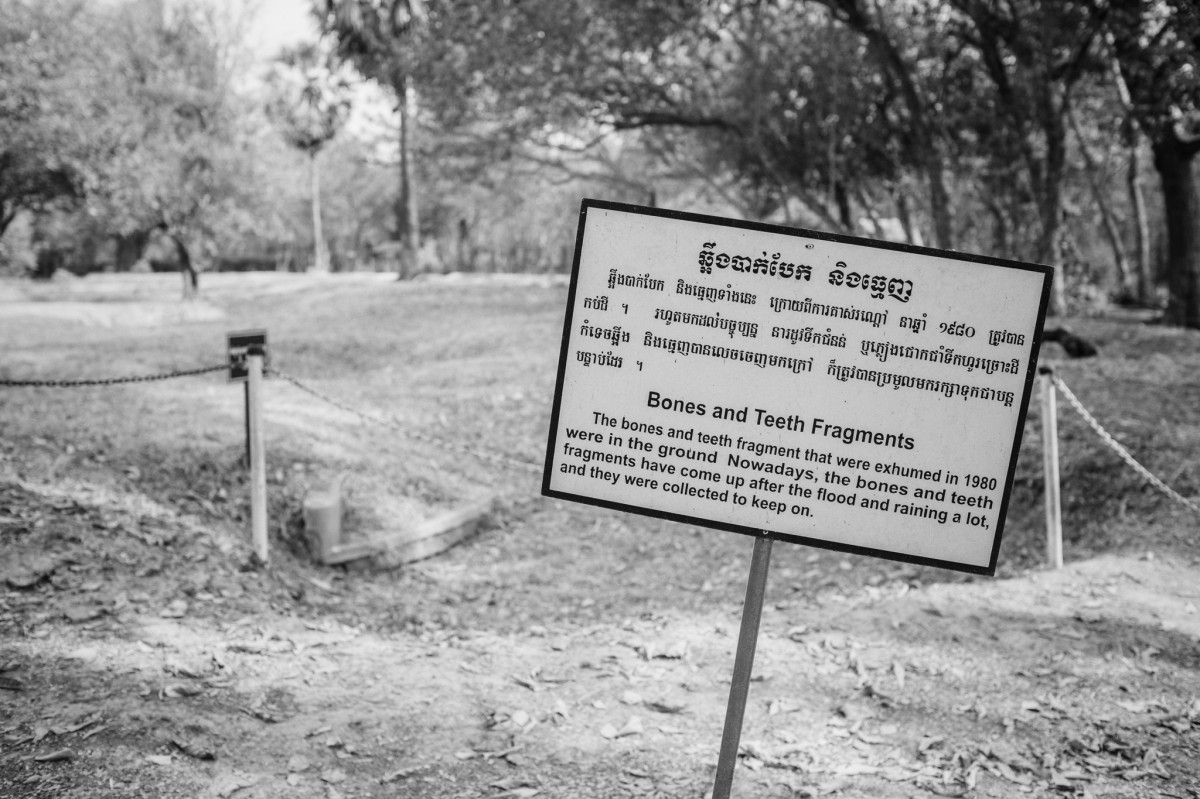
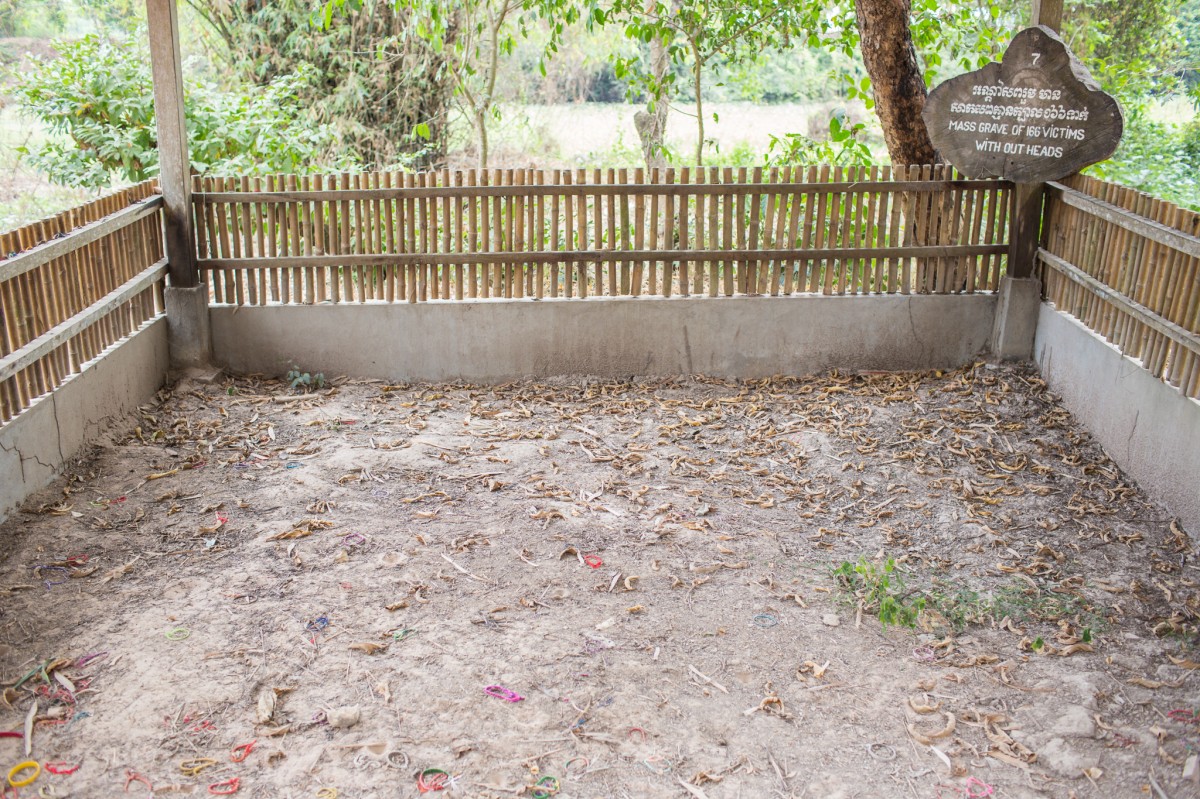
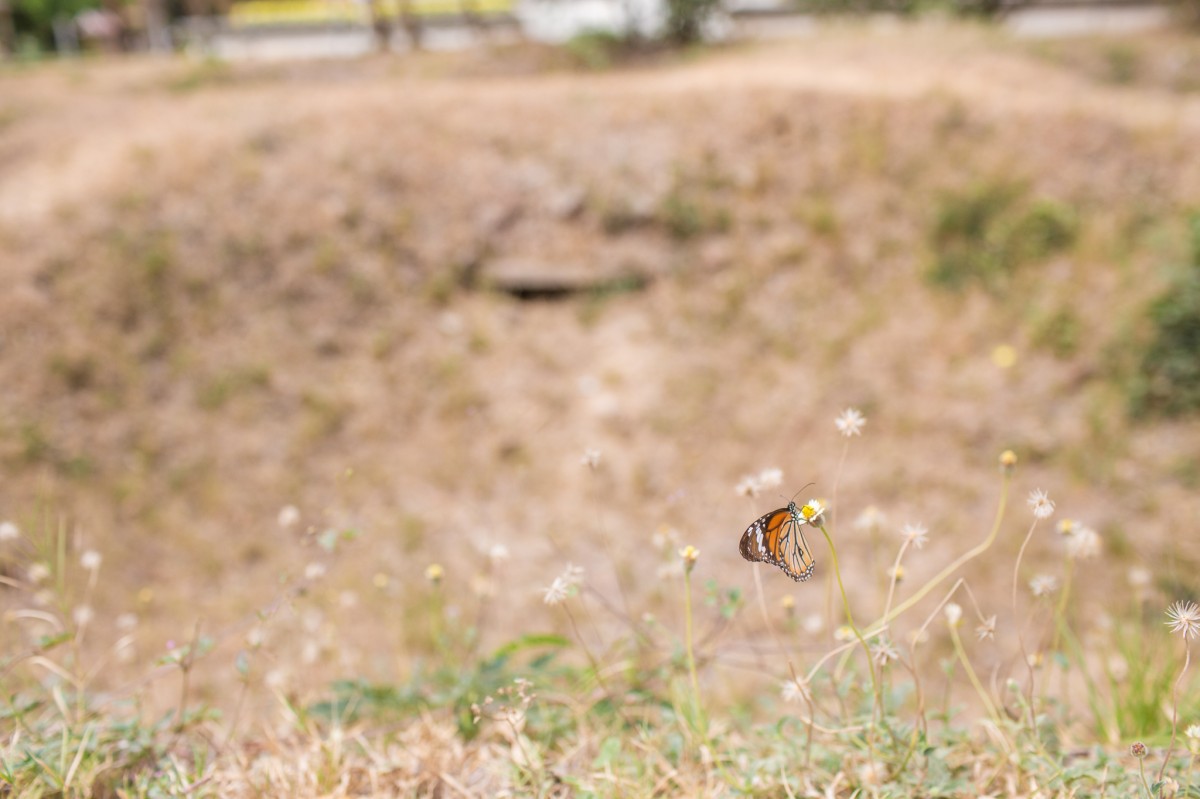 There is a large indentation in the ground behind the butterfly, where bones, skulls and scraps of clothing were found.
There is a large indentation in the ground behind the butterfly, where bones, skulls and scraps of clothing were found.
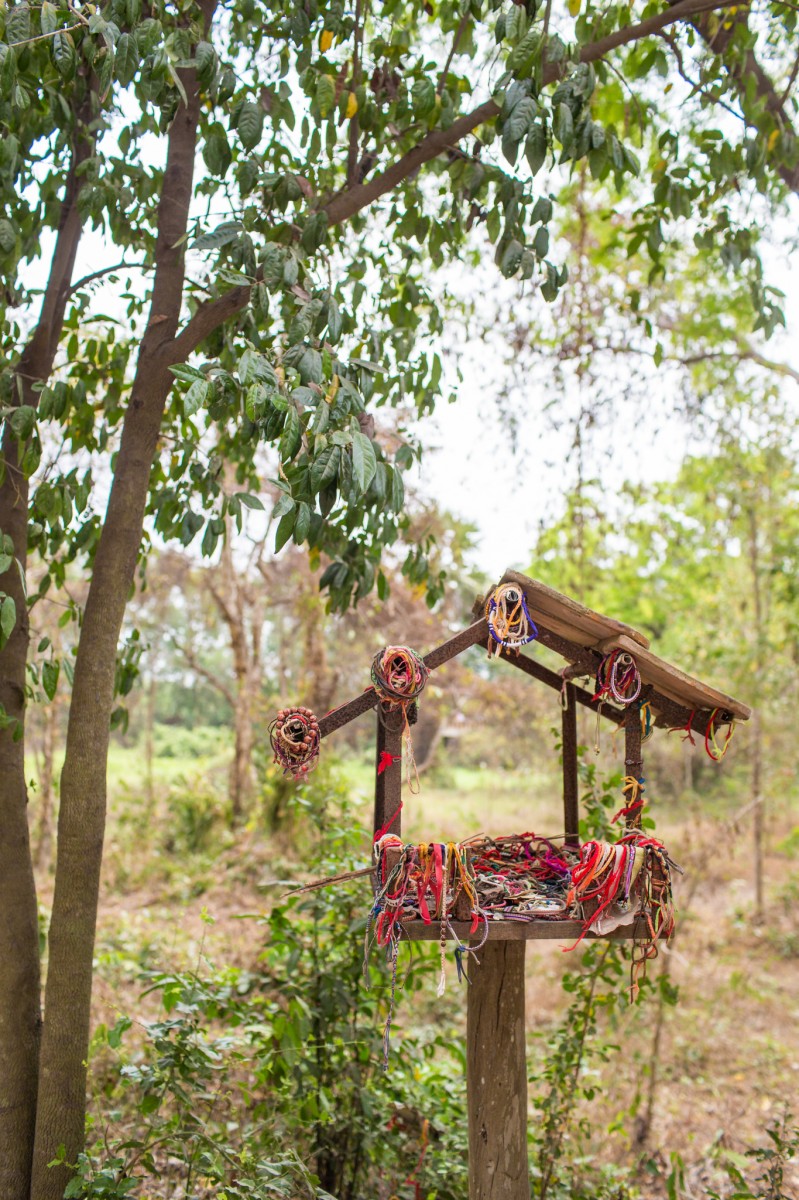 A spirit house on the Killing Fields.
A spirit house on the Killing Fields.
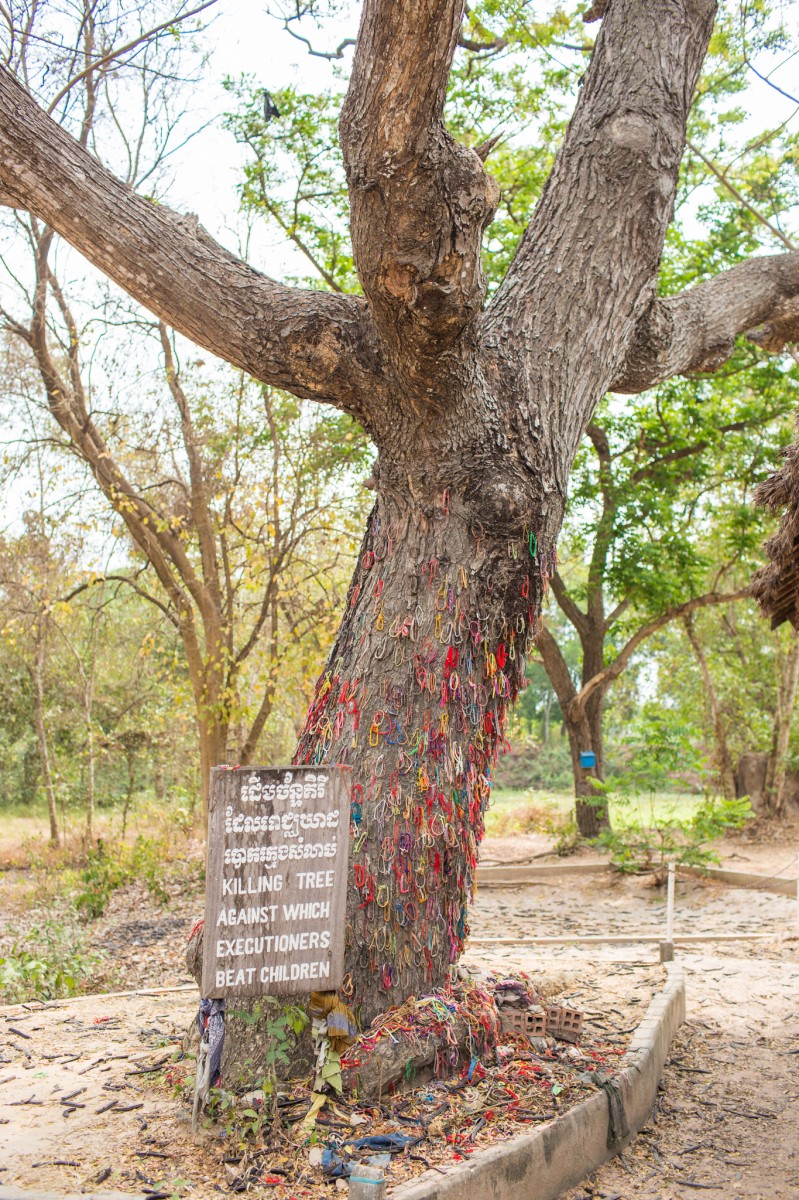 This one is very disturbing. After the fall of the Khmer Rouge, the researchers who discovered the Killing Fields found skull fragments and human hair on the trunk of this tree, to their bewilderment. It was later learned that babies were killed by slamming their heads into this tree.
This one is very disturbing. After the fall of the Khmer Rouge, the researchers who discovered the Killing Fields found skull fragments and human hair on the trunk of this tree, to their bewilderment. It was later learned that babies were killed by slamming their heads into this tree.
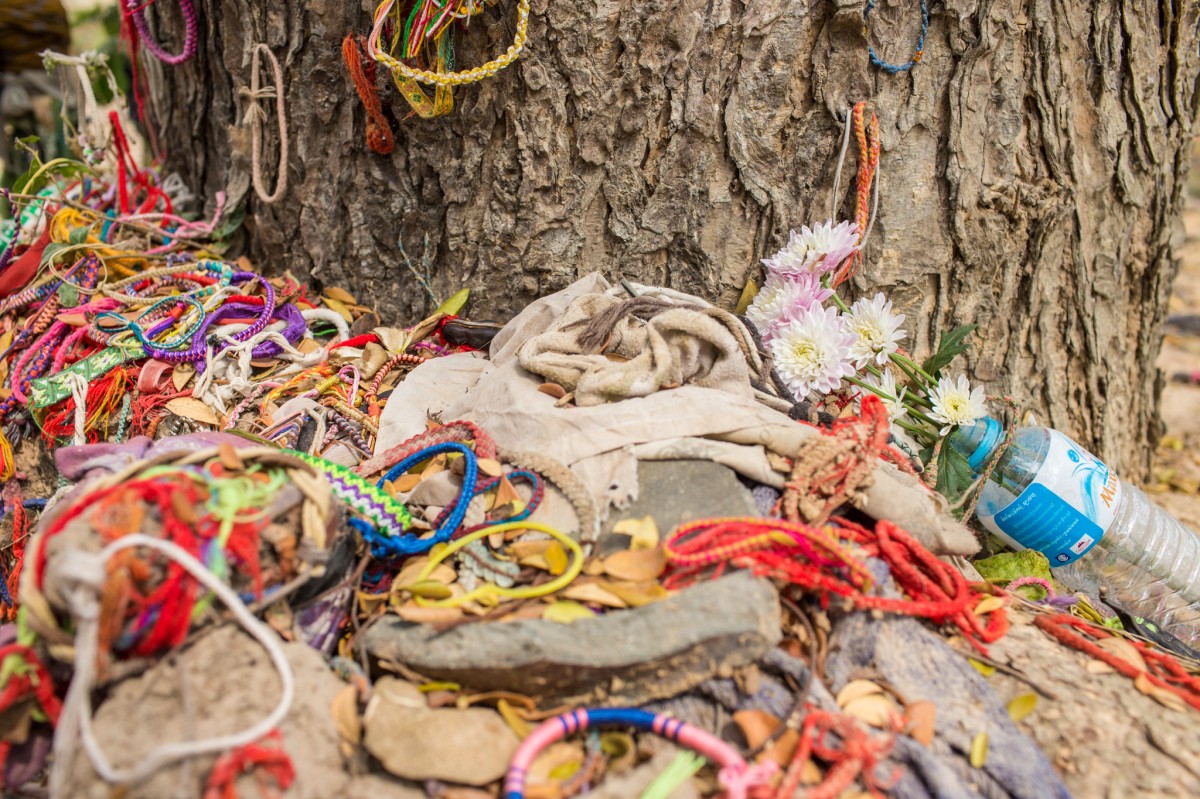
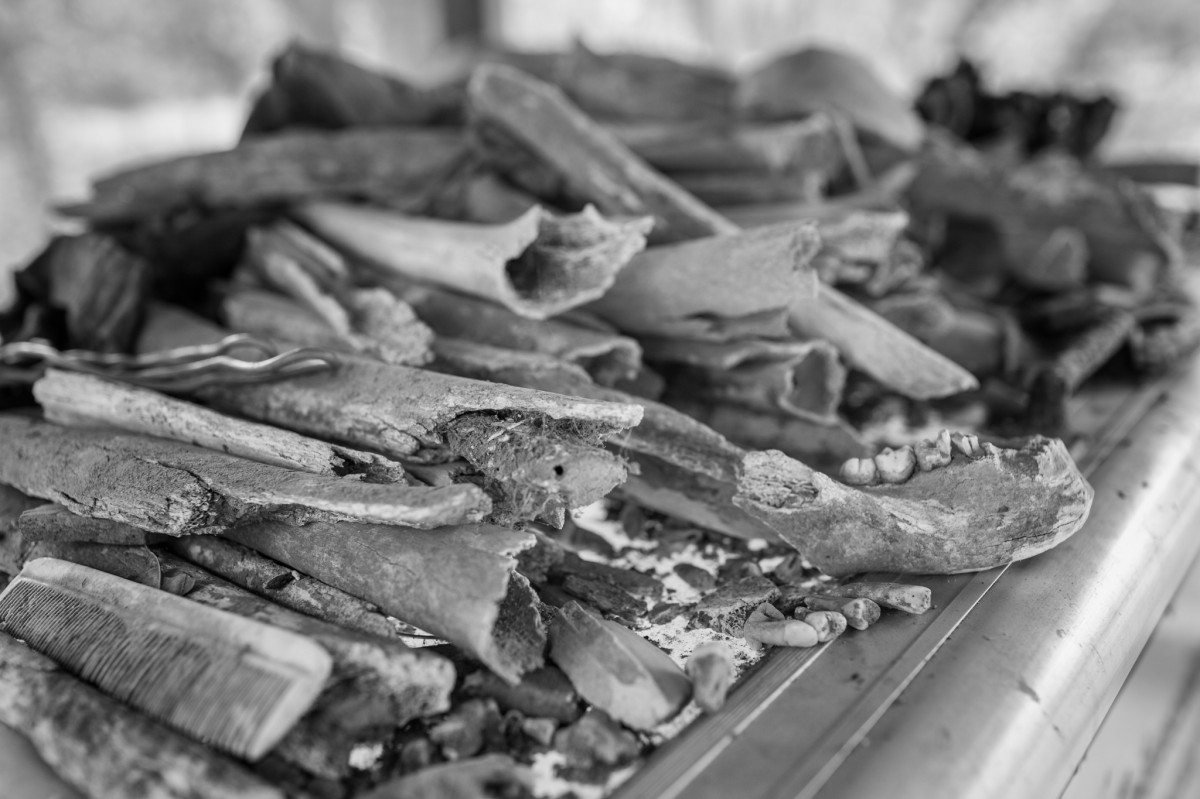 Fragments of bones and teeth are on display.
Fragments of bones and teeth are on display.
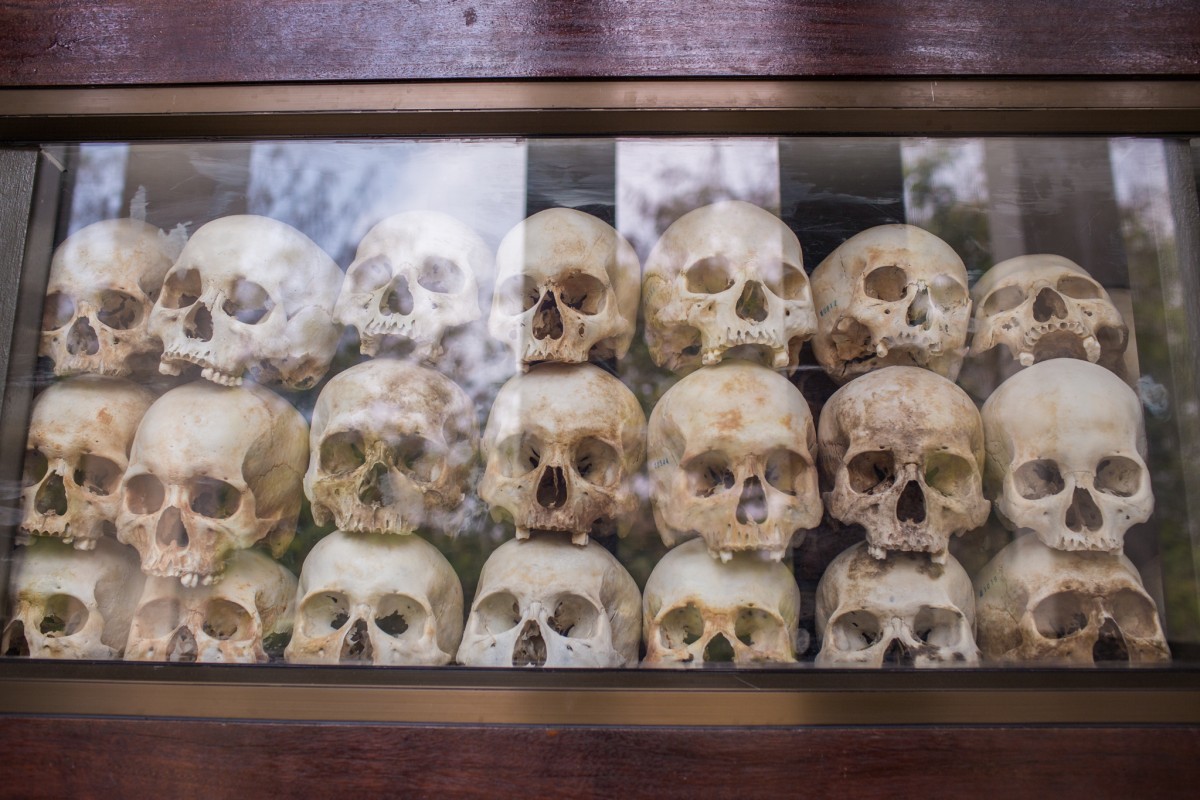
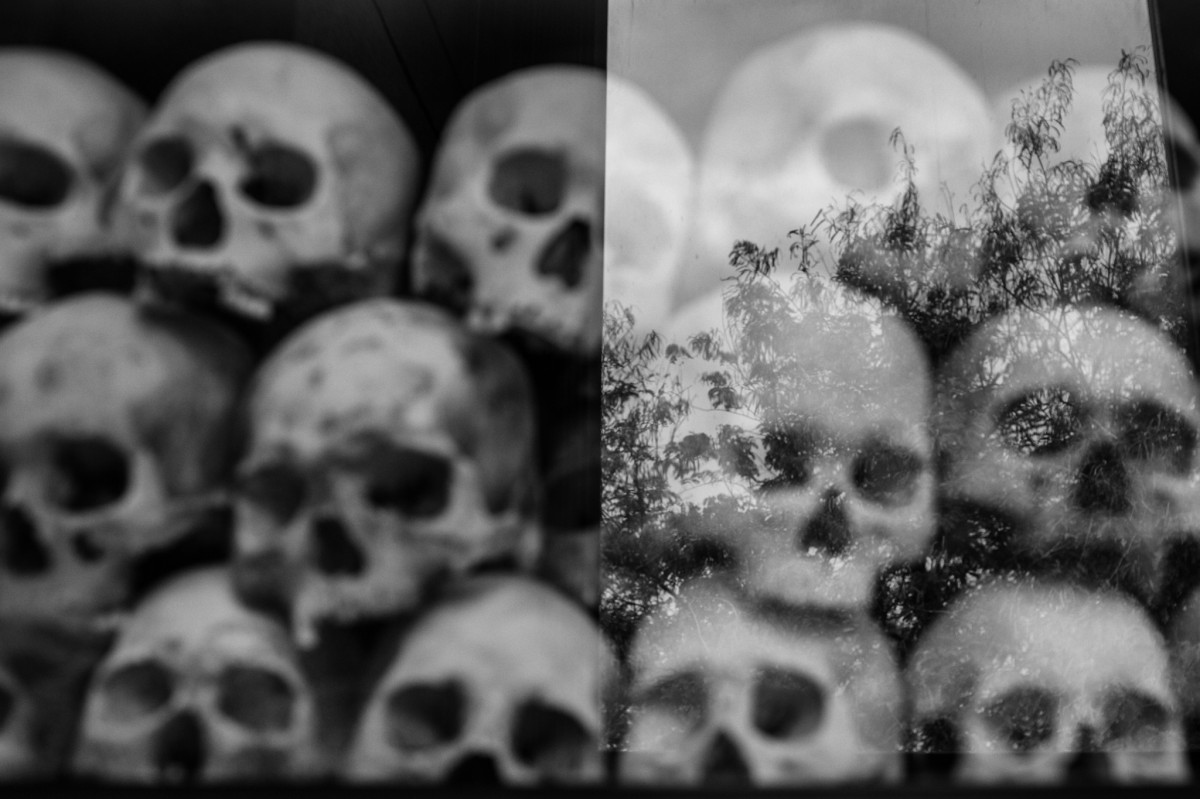
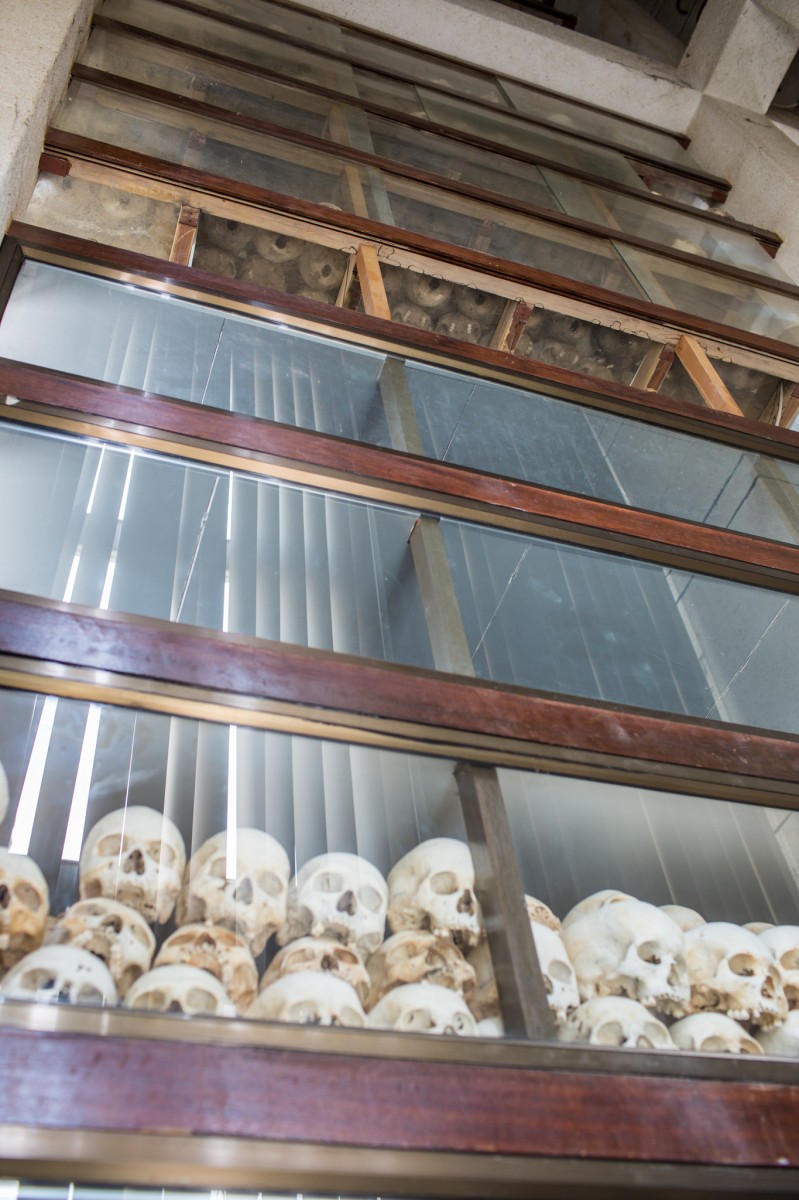 There are well over 5,000 skulls housed in this stupa/monument. It is seven stories of just skulls.
There are well over 5,000 skulls housed in this stupa/monument. It is seven stories of just skulls.
After my visit to the Killing Fields, I visited Tuol Sleng, which was originally a high school but became a prison where enemies of the state were held, tortured and killed during the Khmer Rouge regime.
What struck me, besides the obvious, where the meticulous records the Khmer Rouge kept, and the amount of photos they took to record their atrocious acts.
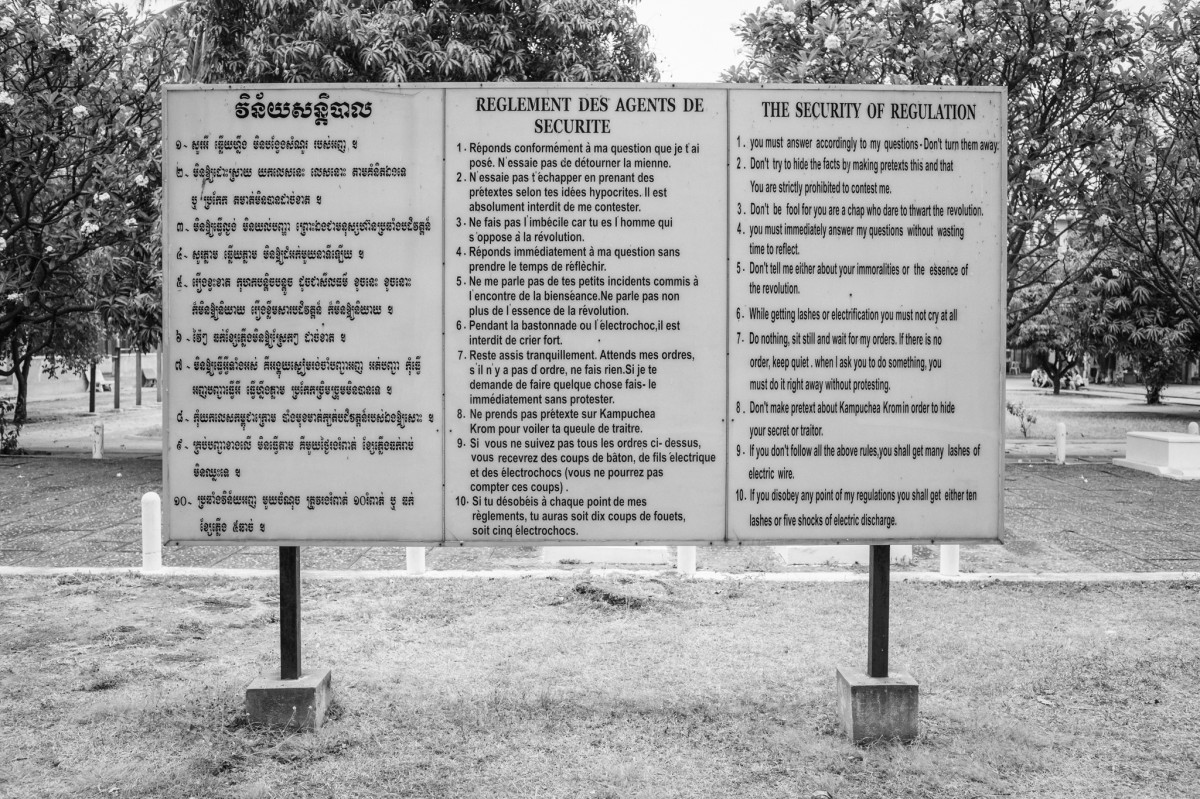
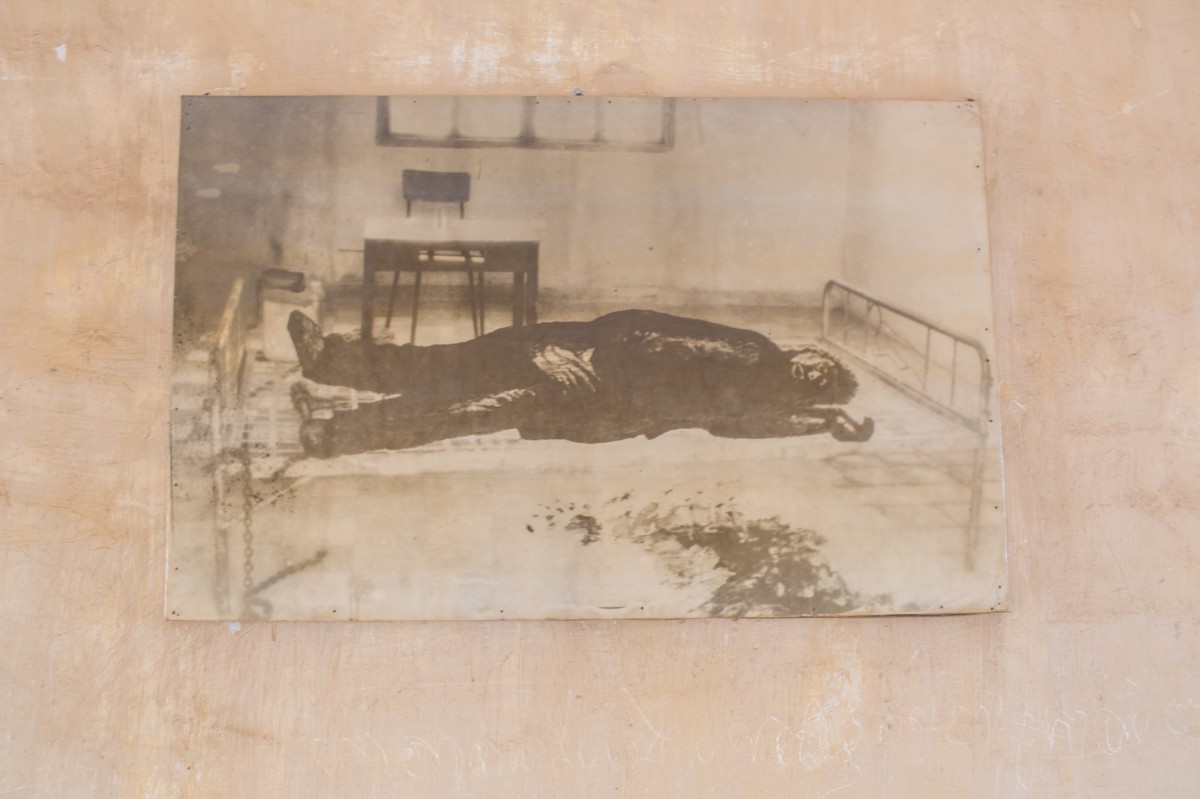
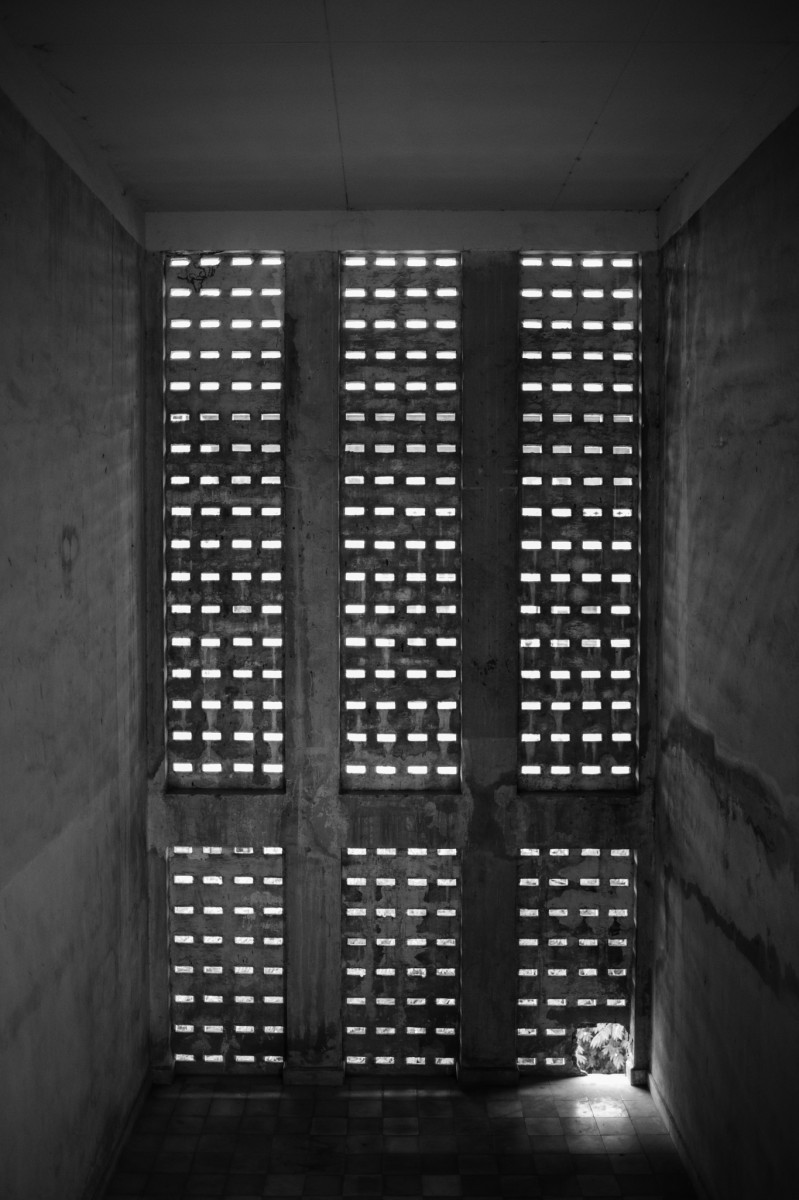
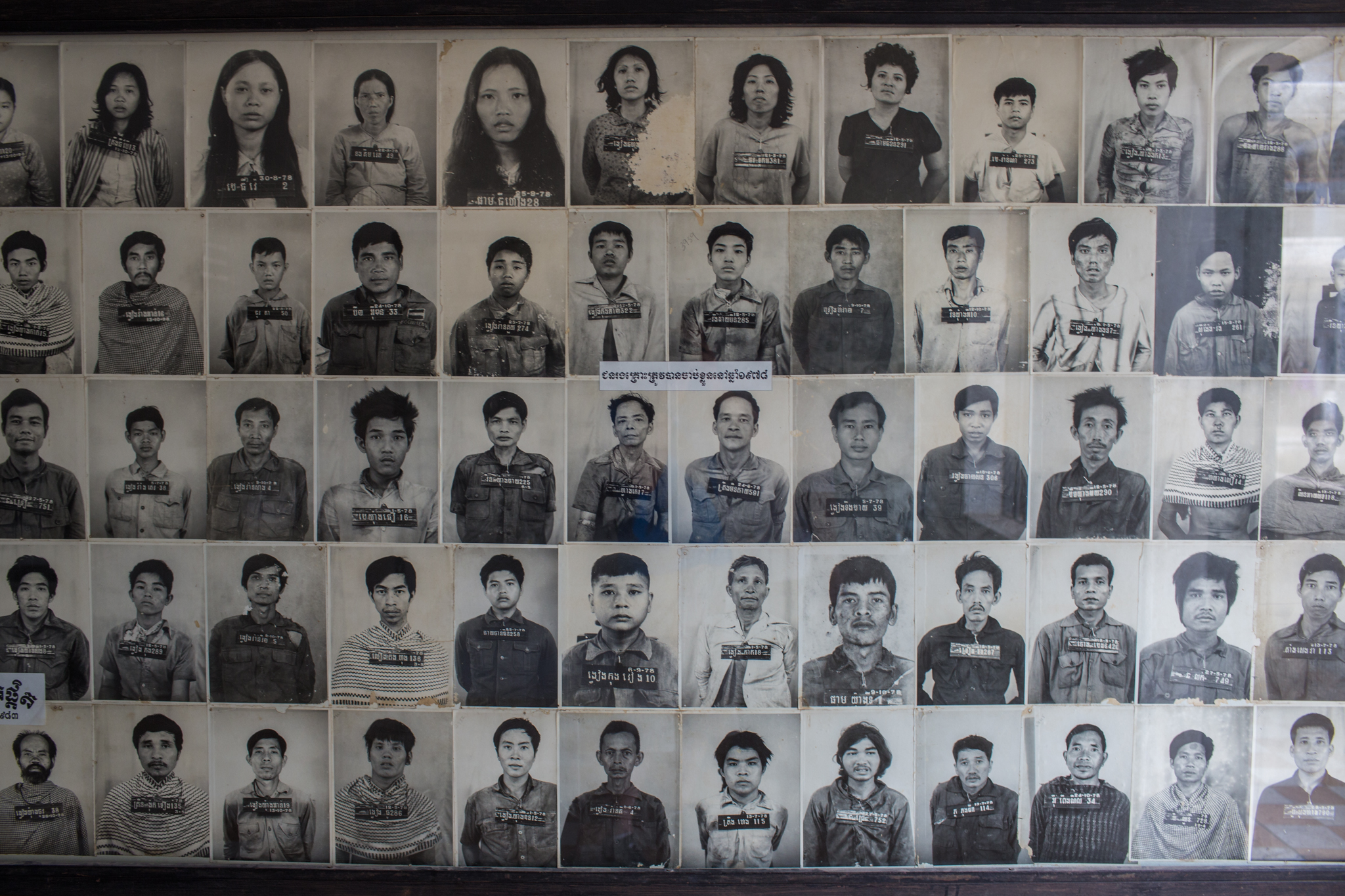 There are thousands and thousands of these “mug shots.” After the fall of the regime, these photos were put on display at Tuol Sleng so that Cambodians could find out if their family members were imprisoned here and to find out what their fates were.
There are thousands and thousands of these “mug shots.” After the fall of the regime, these photos were put on display at Tuol Sleng so that Cambodians could find out if their family members were imprisoned here and to find out what their fates were.
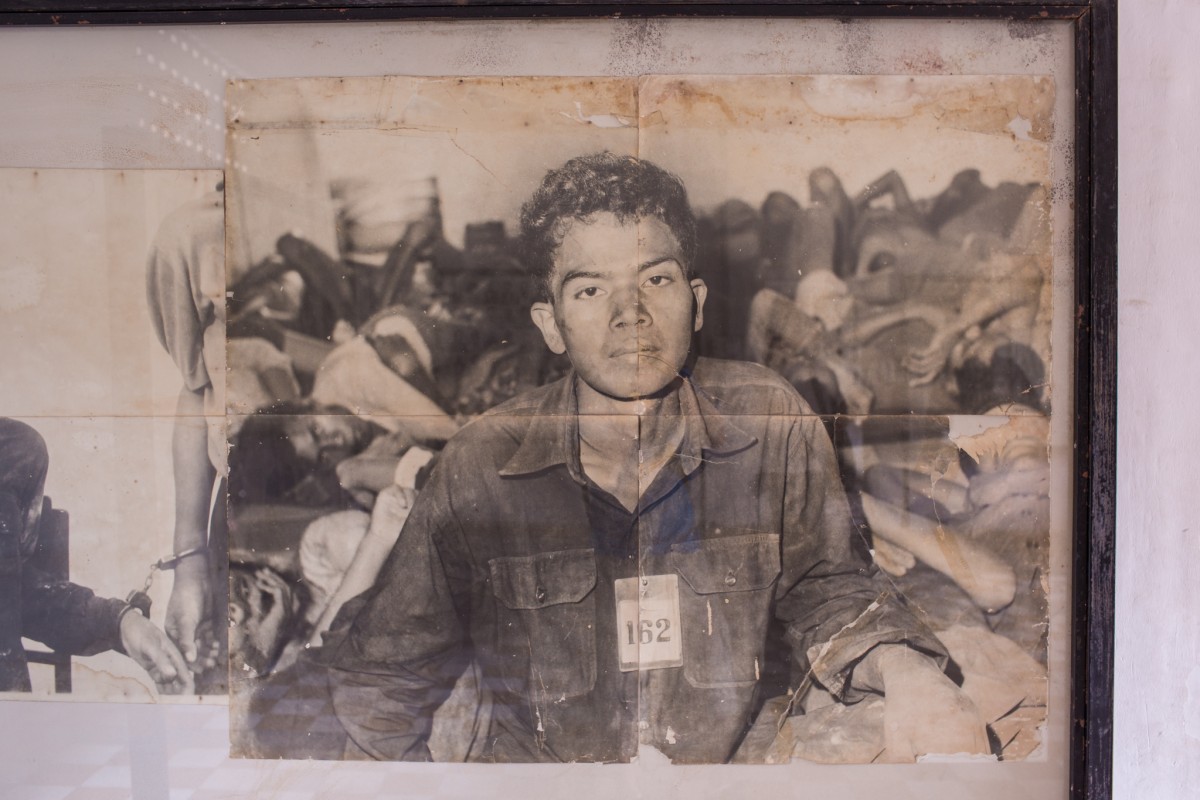
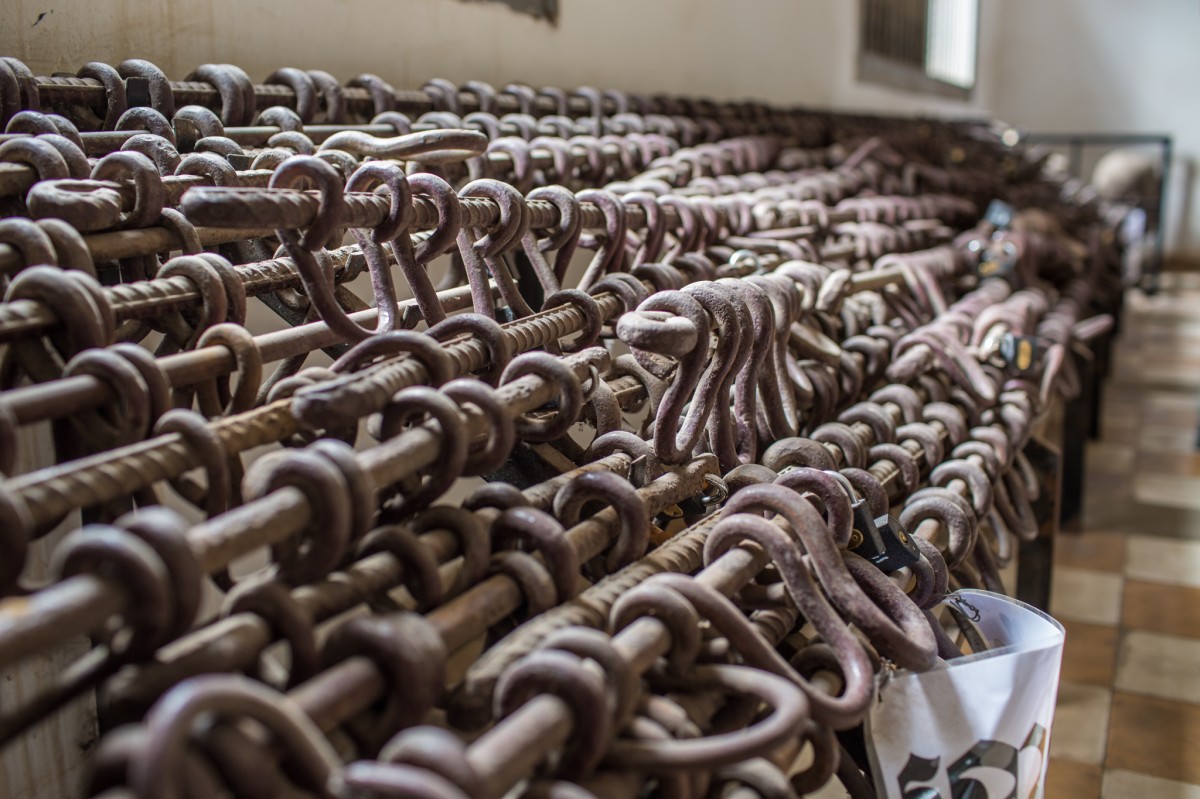 Leg shackles that were put on the prisoners before going to sleep every night.
Leg shackles that were put on the prisoners before going to sleep every night.
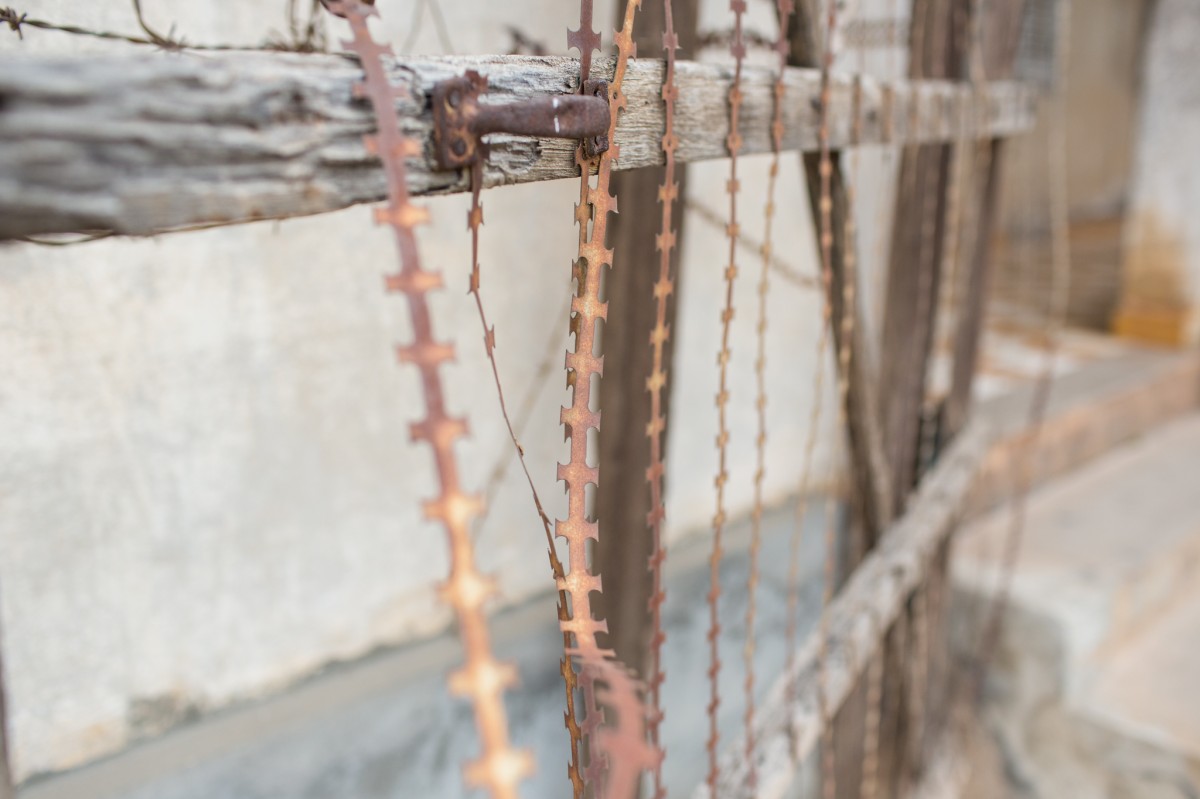
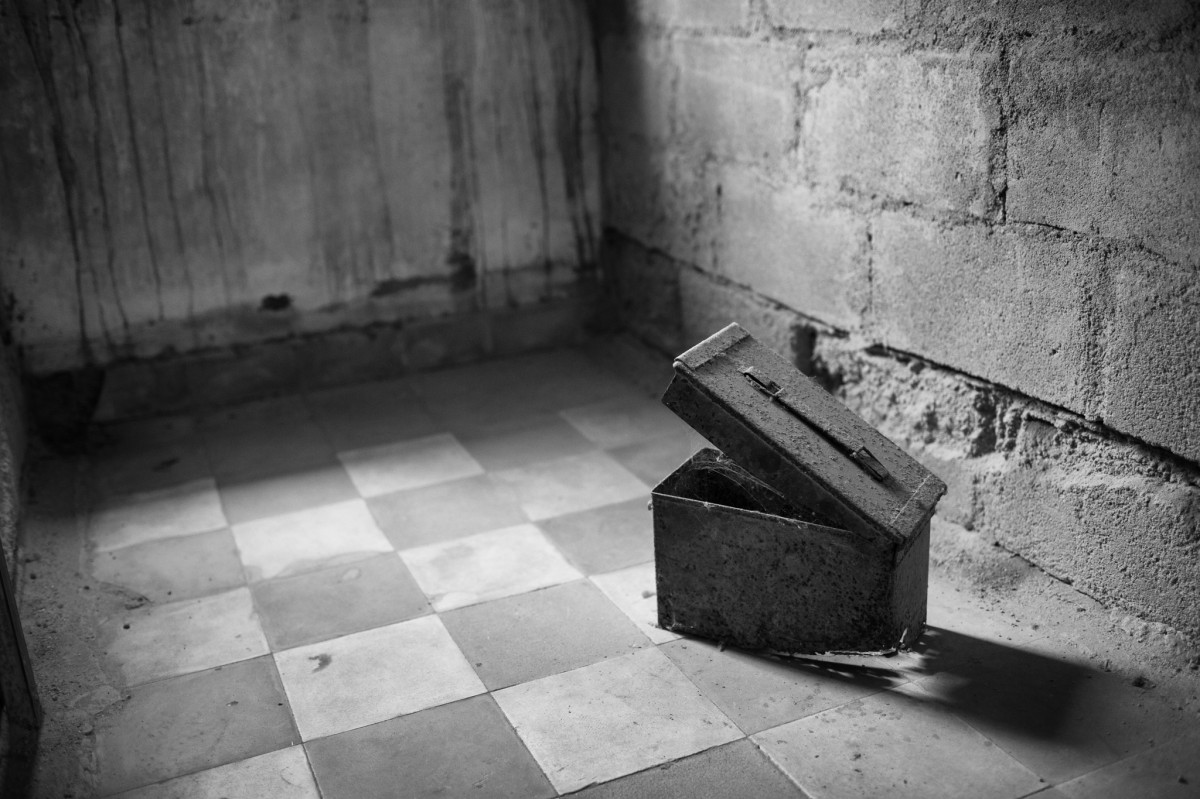
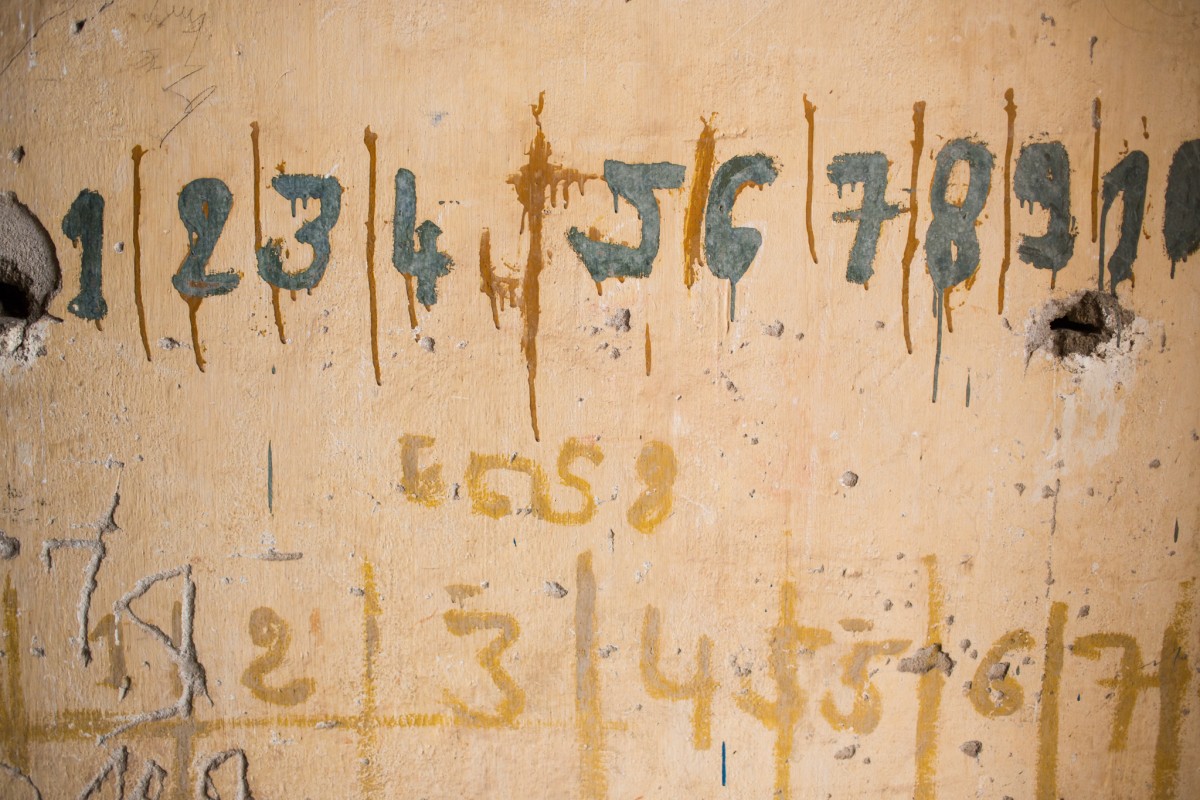
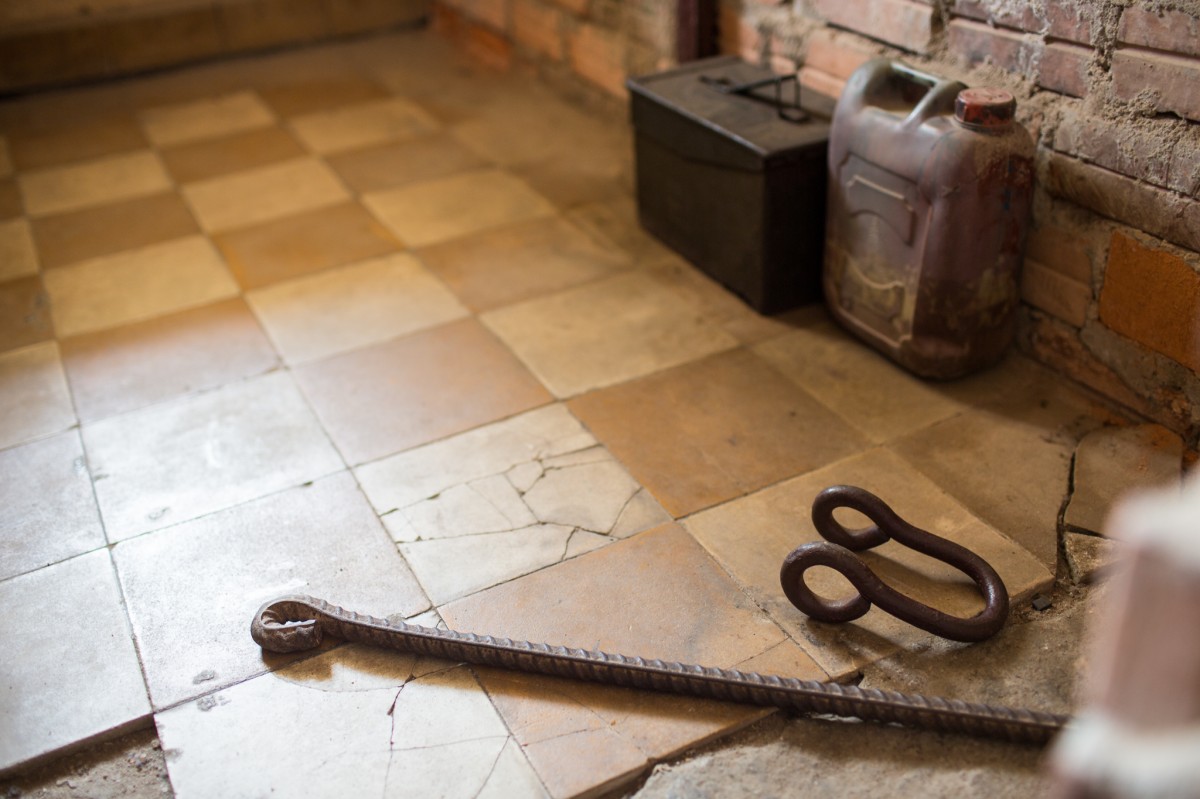
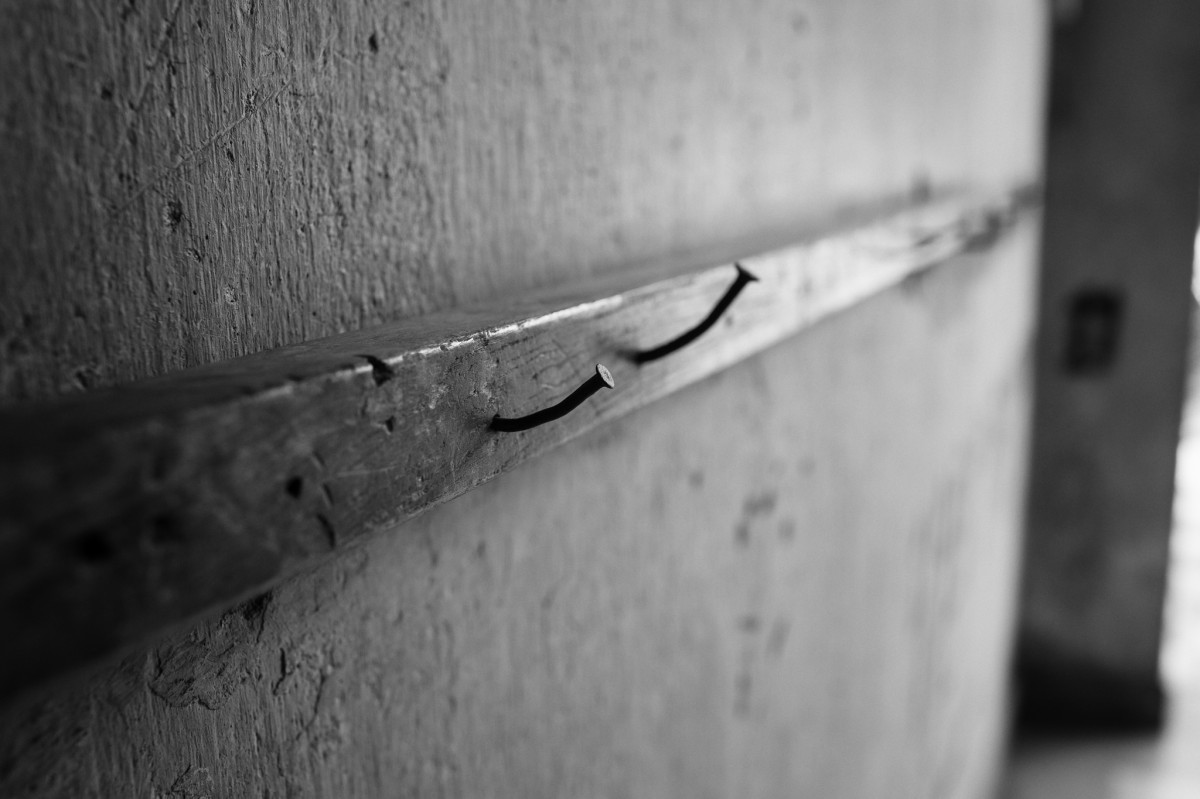 Keys of the prison cells were hung on these nails.
Keys of the prison cells were hung on these nails.
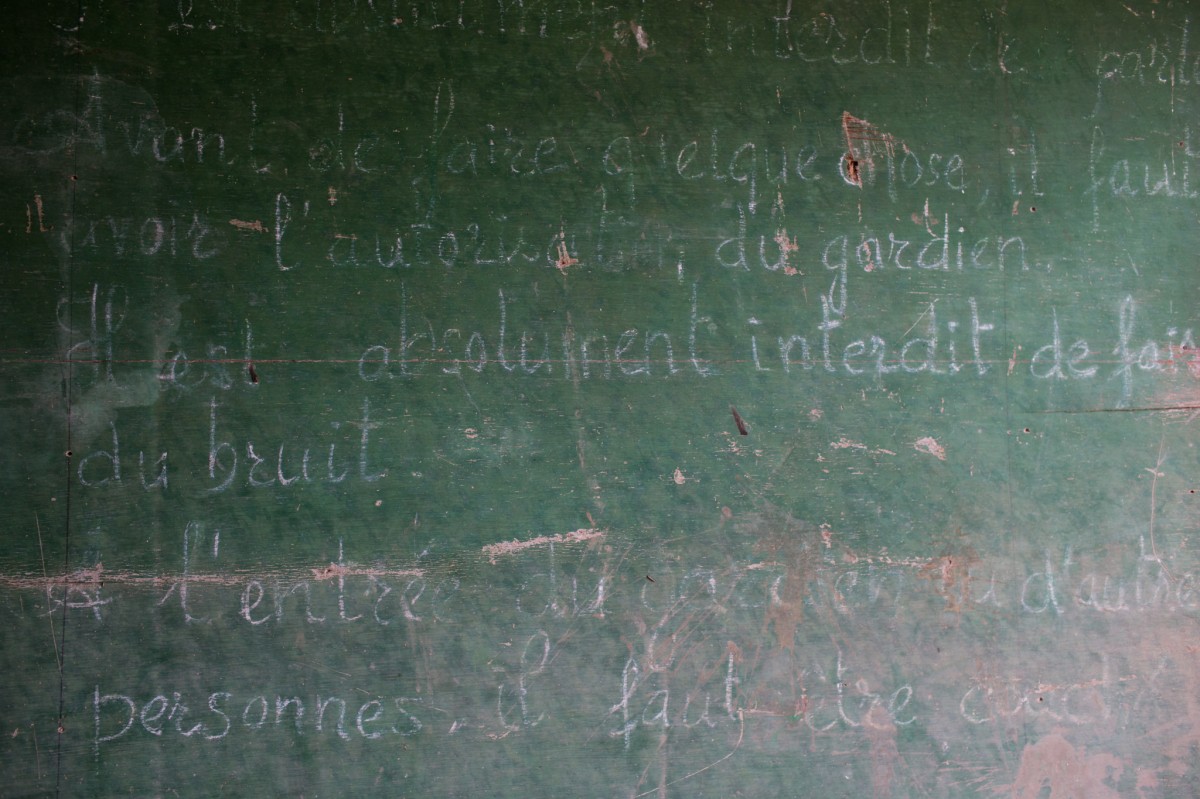
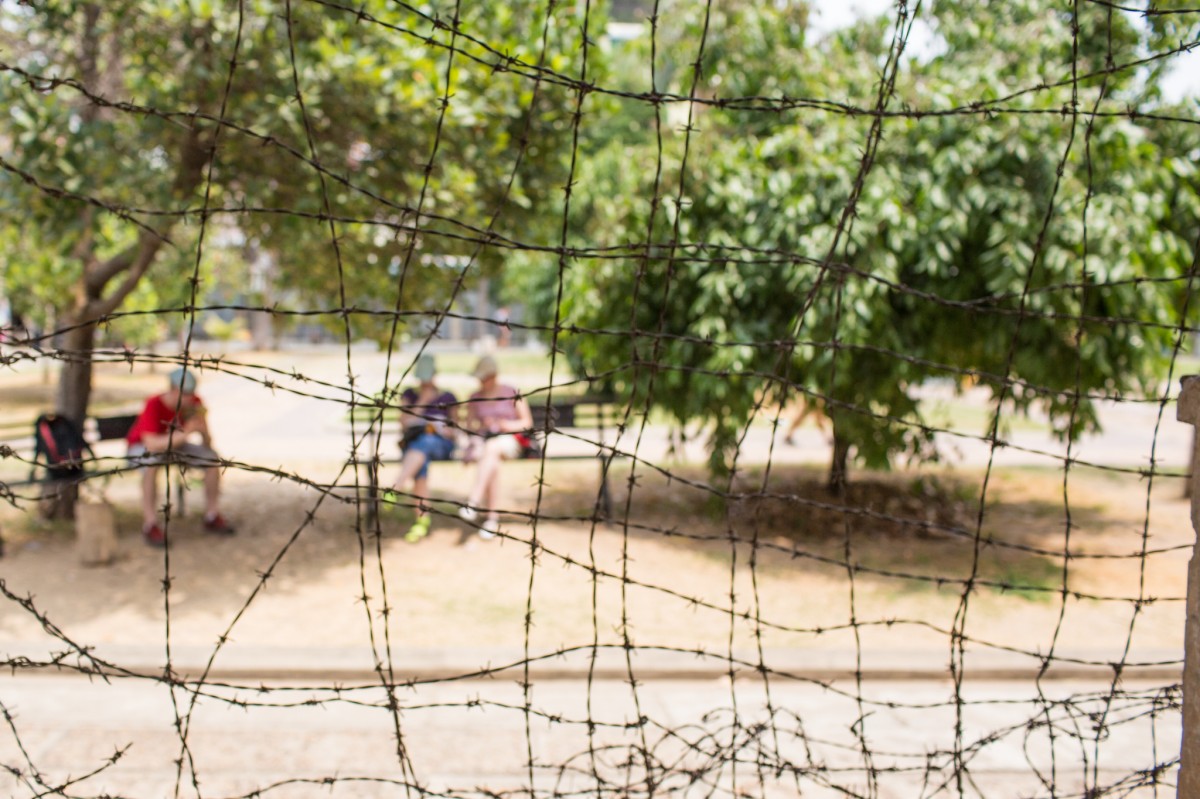
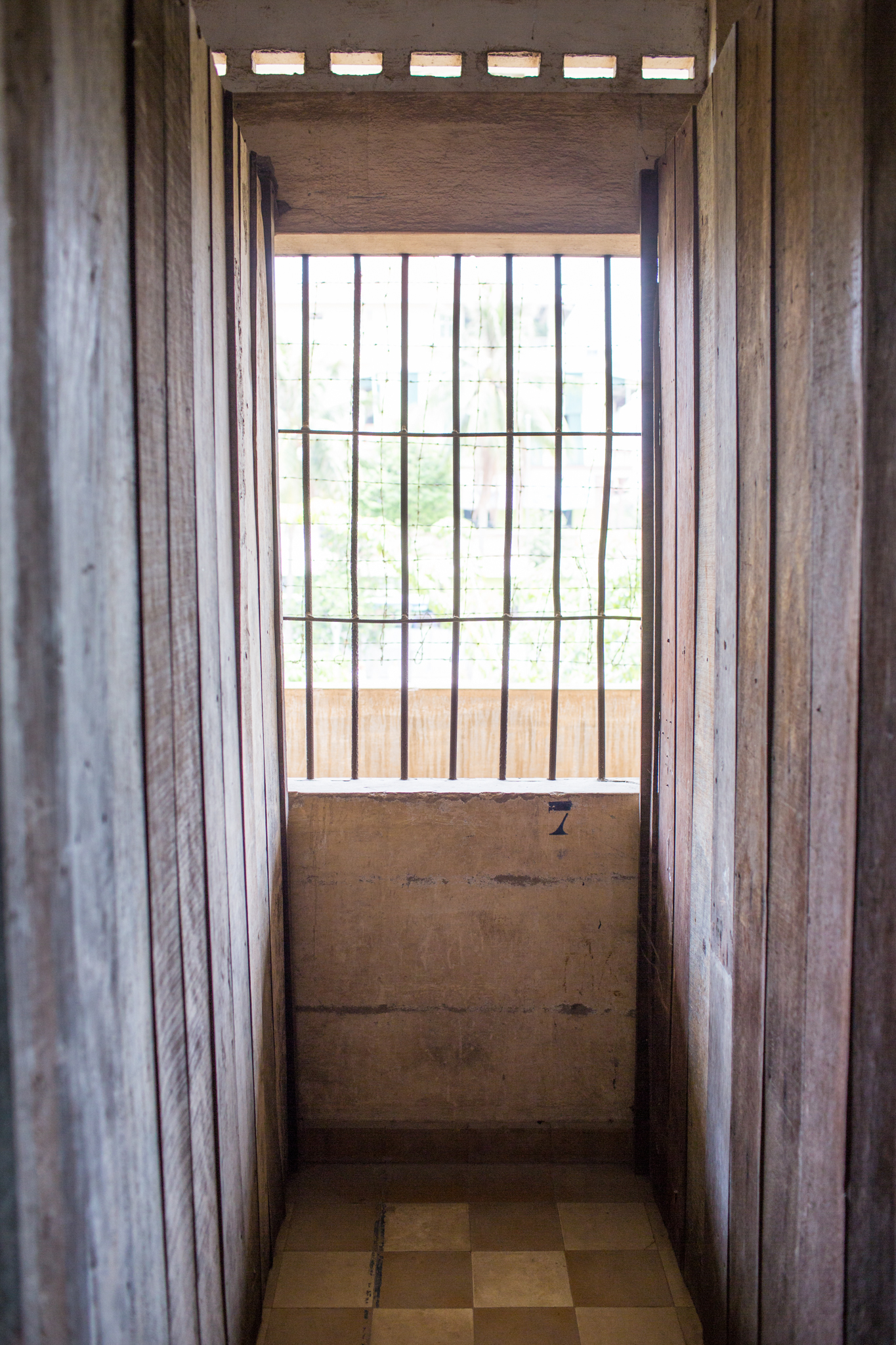 Most of the living quarters and holding cells were about three feet wide.
Most of the living quarters and holding cells were about three feet wide.
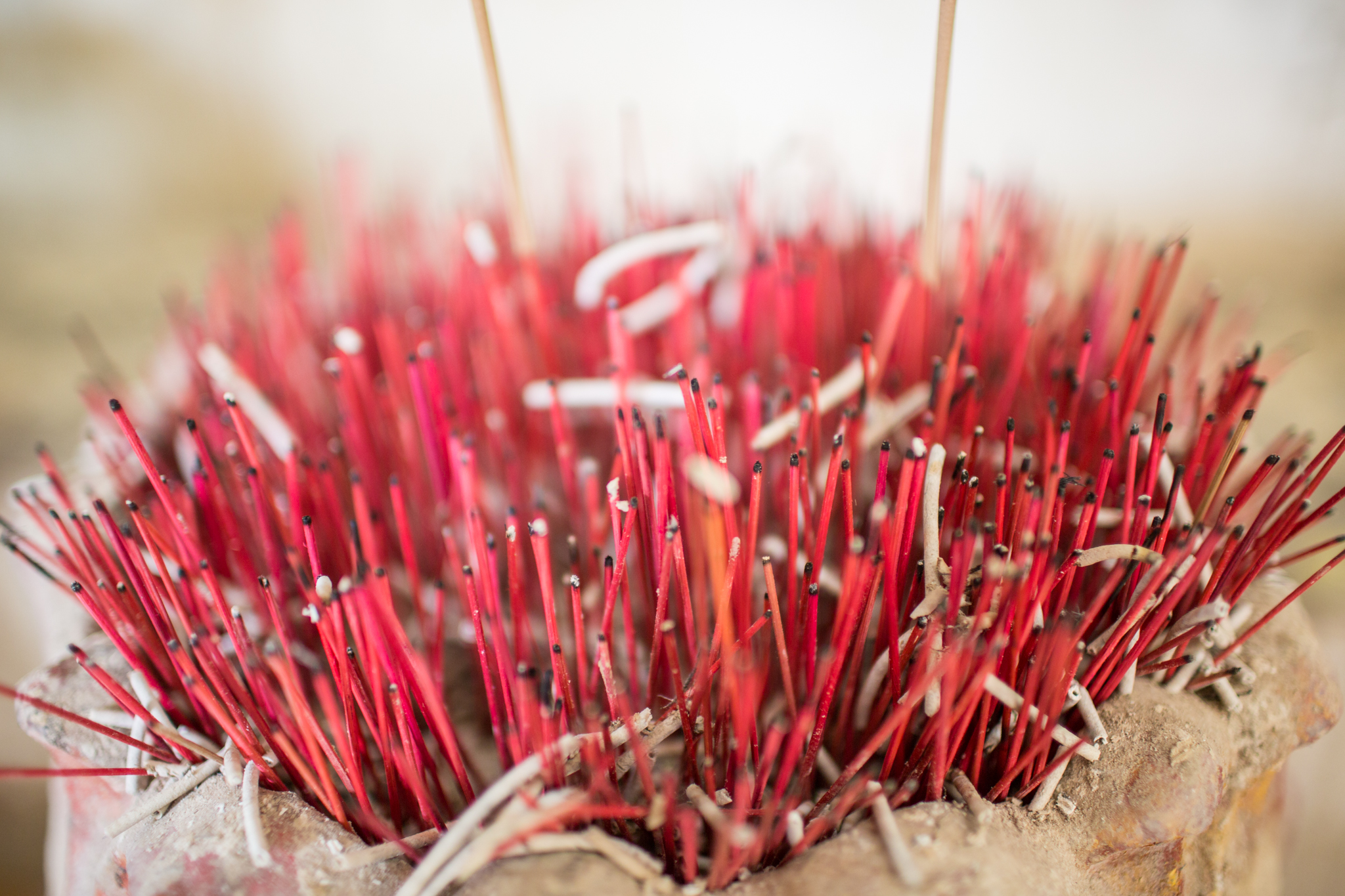
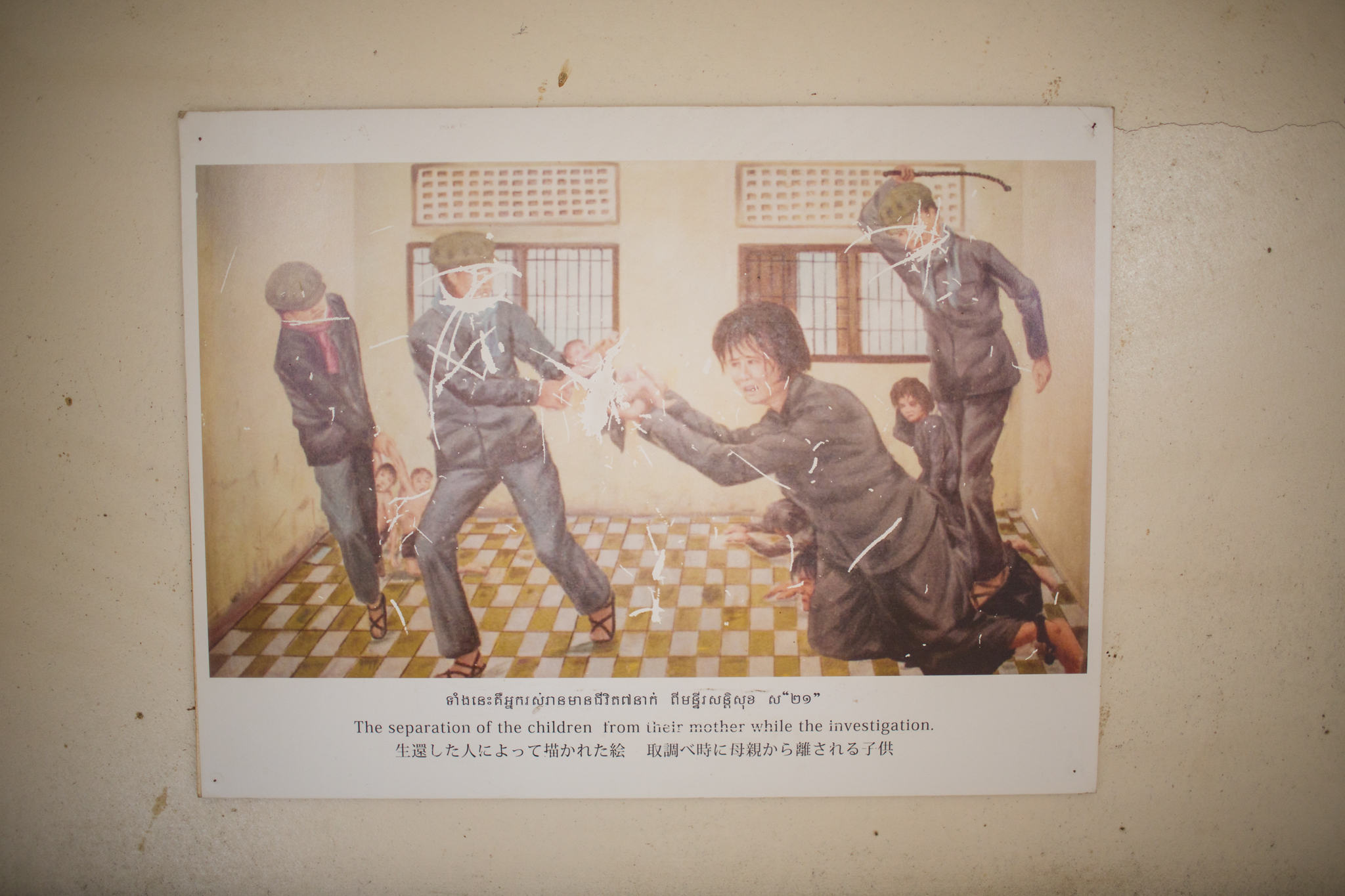 Many of these illustrations have the Khmer Rouge soldiers’ face scratched off. I’m assuming they were done in contempt by the surviving family members who visited the prison/museum after the regime.
Many of these illustrations have the Khmer Rouge soldiers’ face scratched off. I’m assuming they were done in contempt by the surviving family members who visited the prison/museum after the regime.
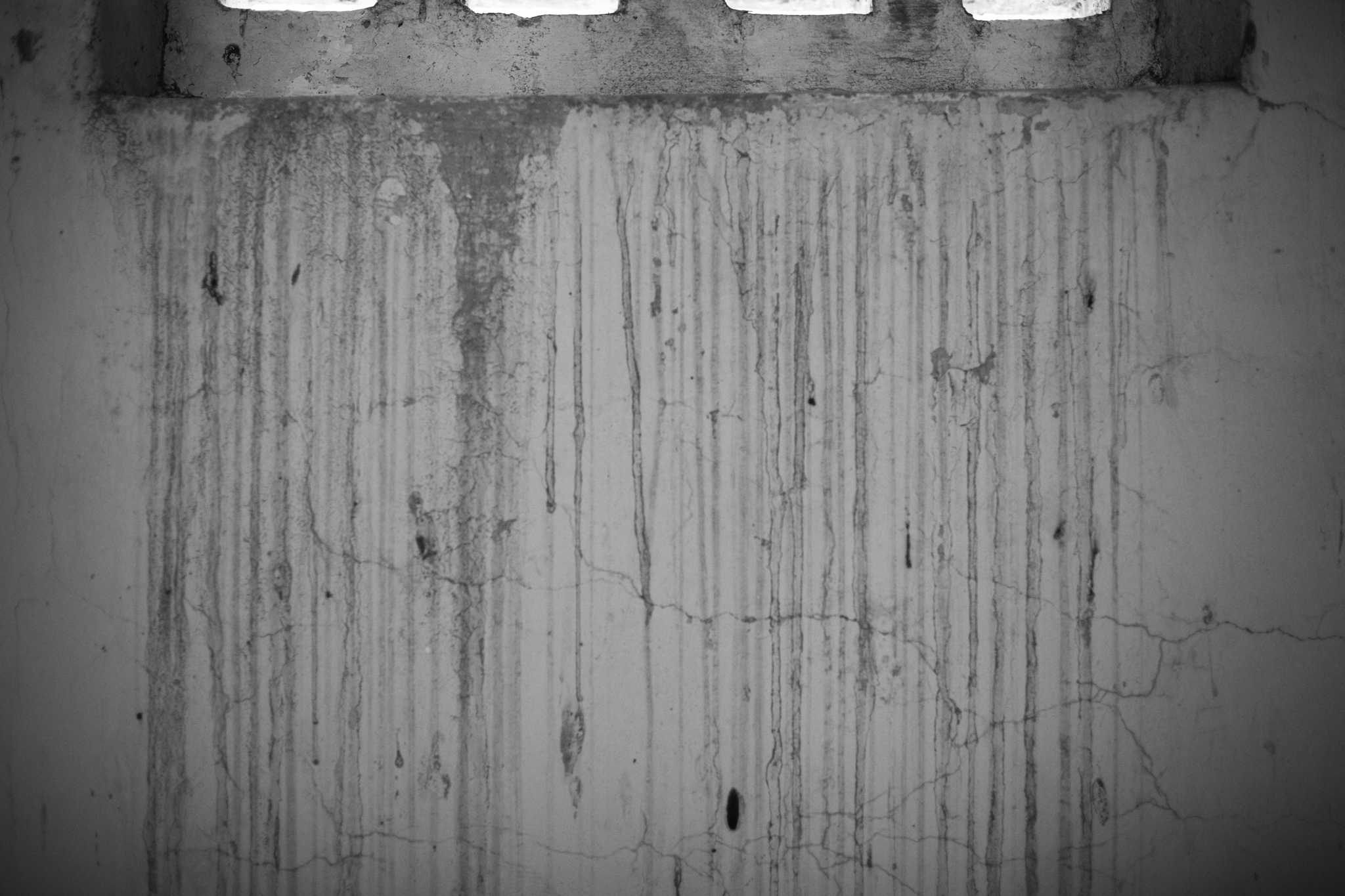
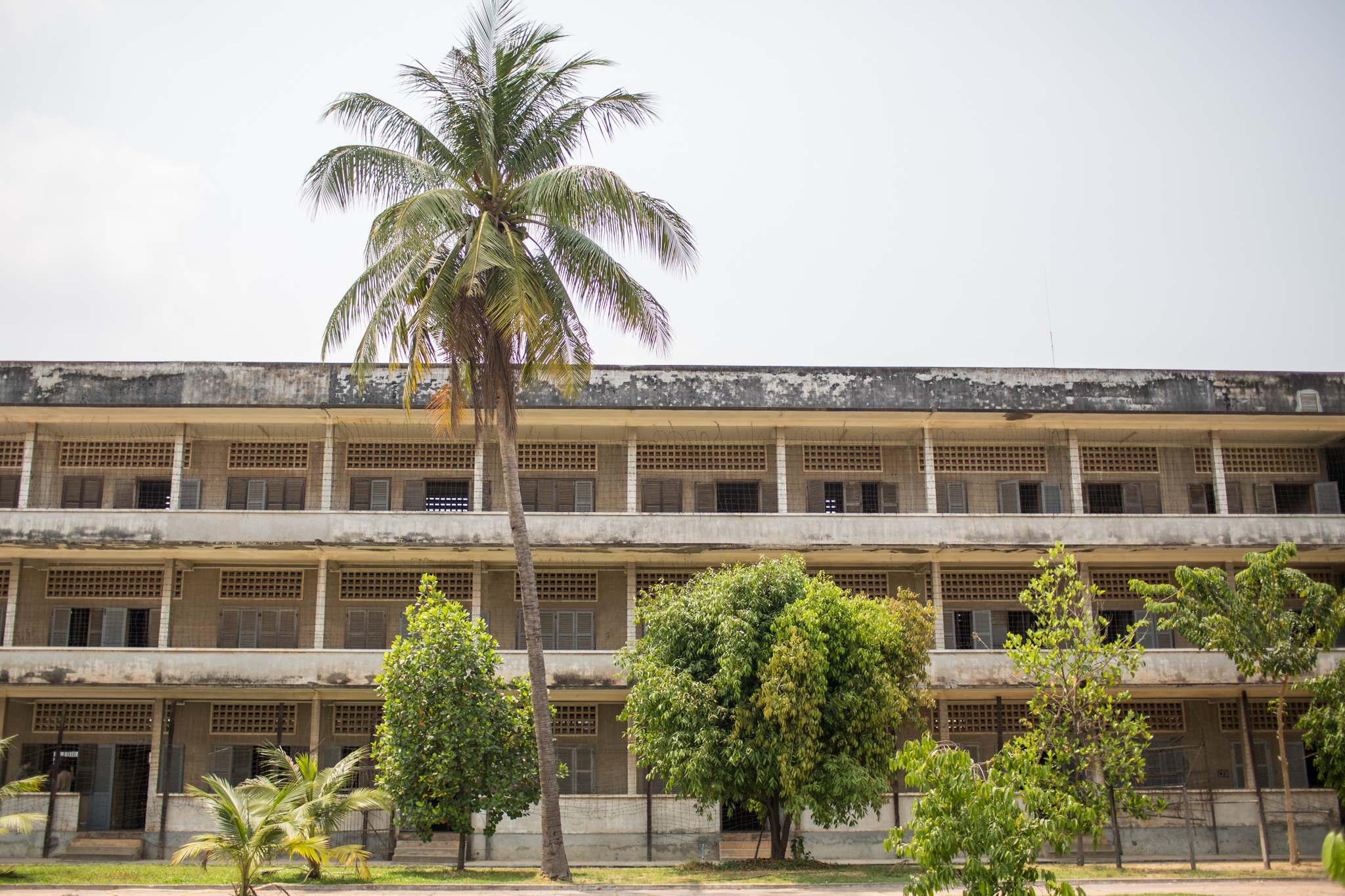
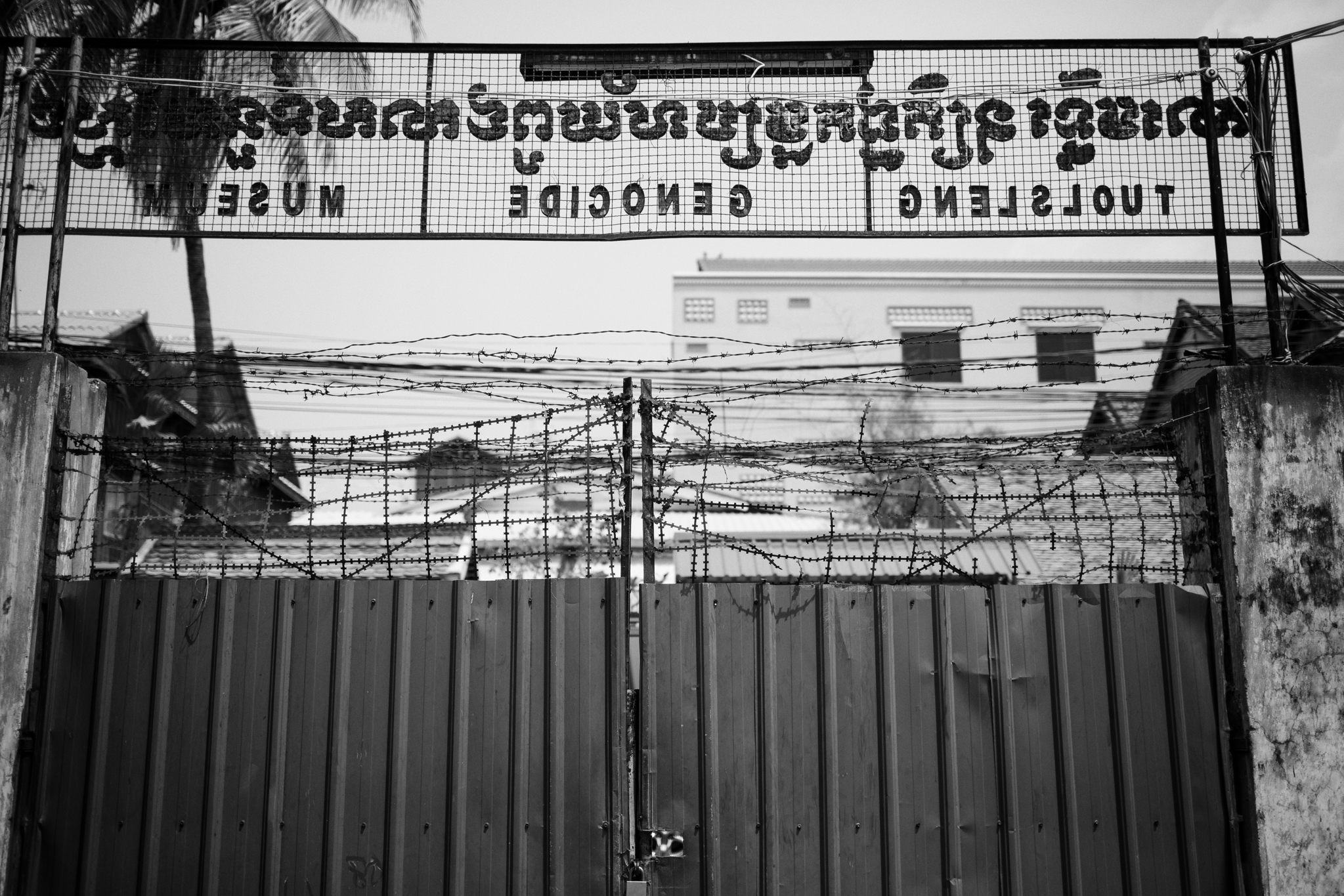
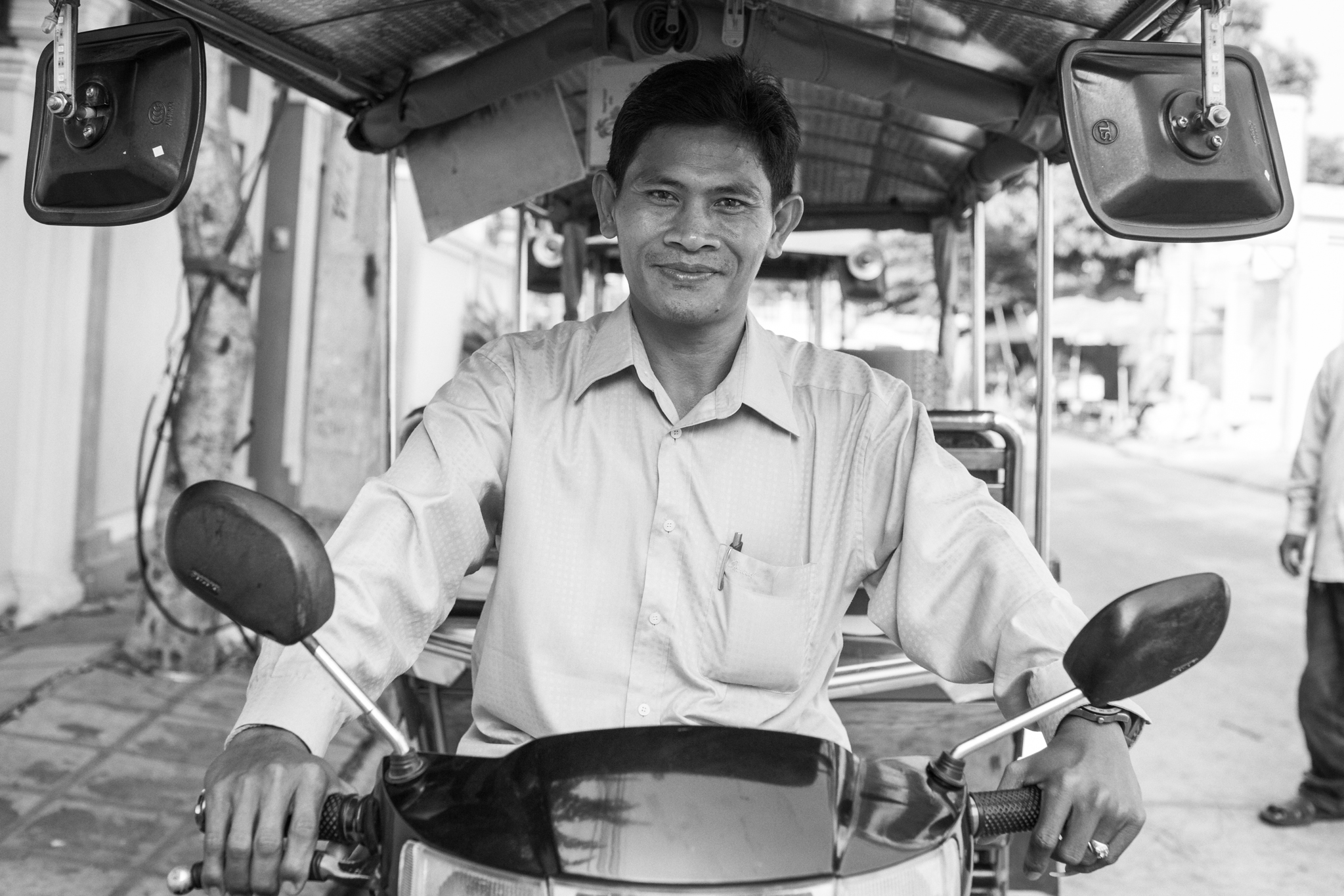 This was my tuk tuk driver for the day. I asked him about how the Khmer Rouge effected him. He was just a baby at the time, but his aunt and uncle both passed away in Tuol Sleng, as they were both doctors.
This was my tuk tuk driver for the day. I asked him about how the Khmer Rouge effected him. He was just a baby at the time, but his aunt and uncle both passed away in Tuol Sleng, as they were both doctors.
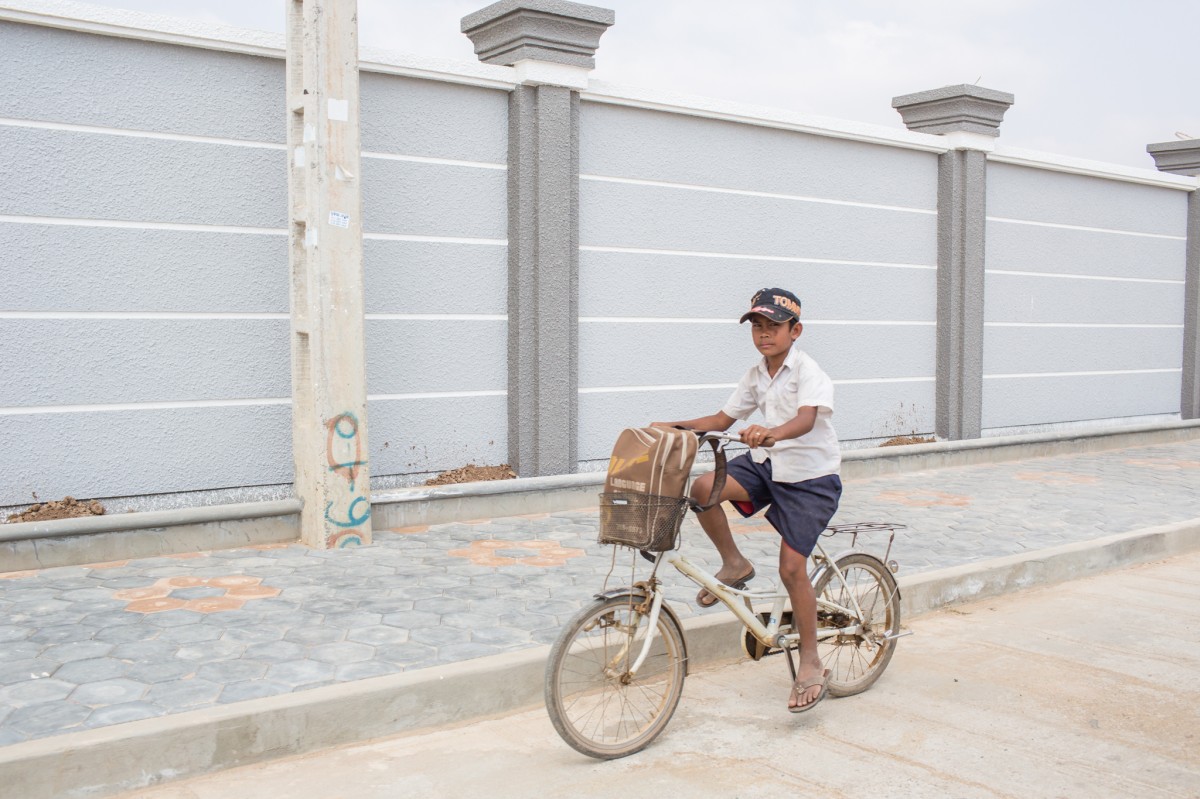
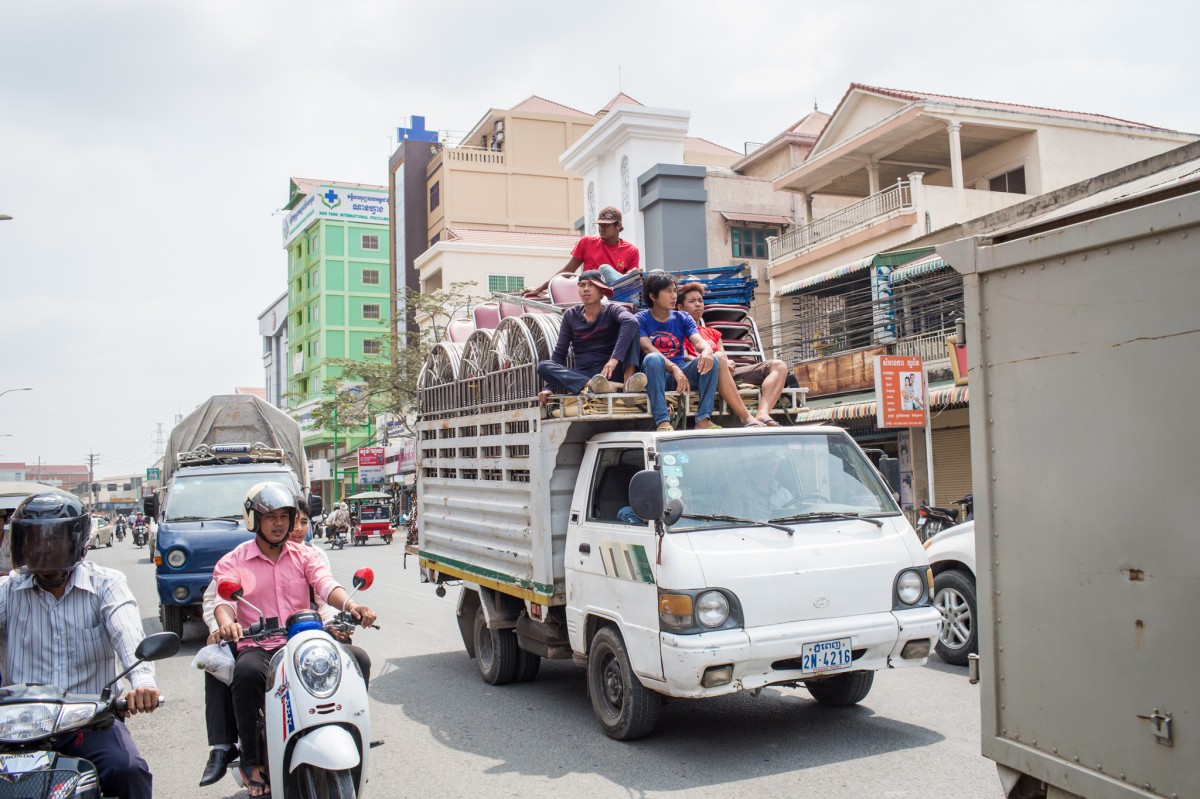 The following two images were taken on a bathroom break on my way up to Siem Reap via bus. Trains are nonexistent in Cambodia since the Khmer Rouge destroyed most of the train tracks during its rule.
The following two images were taken on a bathroom break on my way up to Siem Reap via bus. Trains are nonexistent in Cambodia since the Khmer Rouge destroyed most of the train tracks during its rule.
Next up, I’ll post photos of Siem Reap and write about some of my lasting impressions of the beautiful country and even more beautiful people.

